THE BEST GRAVEL WHEELS

Dedicated gravel bike wheels are bred for performing on dirt and gravel roads and trails in ways that most paved road wheels can’t match. In this review, I’ll tell you how gravel wheelsets differ and which are the best at three price levels.
TL;DR (click for more)
- The best gravel wheelsets have wider rims and are more responsive and compliant than most road wheels. They offer better performance on a wider range of off-road surfaces and more dynamic terrain changes than paved roads.
- You should choose between similarly priced gravel wheels based on their responsiveness, handling, compliance, and durability, after accounting for the differences between gravel surfaces, tires, and inflation pressure.
- The ENVE AG25 (available here, here, and here) rates as the Best Value and the Best Performer among all the gravel wheels we’ve tested. It also tops the list of value carbon gravel wheelsets selling for US$1500 or less.
- If you’re out for a long day of steady riding and climbing on a range of gravel surfaces, the Campagnolo Levante (available here, here, here, and here) is our recommended wheelset.
- Shorter, race-like gravel performance without much climbing is best served by the DT Swiss GRC 1100 DICUT 50 (available here and here).
- The Mavic Allroad SL wheelset (available here and here) gives dedicated dirt and gravel road riders the best lower-priced option among alloy gravel wheels.
- If you’re looking for one wheelset that performs as well as our top-rated gravel and road bike wheels, check out our review of the best all road wheels.
Gravel wheels are a relatively new breed of wheelsets for riding dirt and gravel roads and trails. Even with the same gravel tires, a good set of gravel bike wheels will give you better speed, control, handling, confidence, comfort, and enjoyment than road bike wheels on all of those unpaved surfaces we now call “gravel.”
Of course, all gravel wheelsets are not created equal. The best ones have wide carbon rims, are light, engage quickly, and can cost a lot. Some “all-road” wheels can double as gravel wheels and climbing or all-around wheels on our road bikes.
By contrast, wheels that come with new gravel bikes are usually heavy, aren’t very responsive, climb poorly, and will generally hold us back from getting all the performance and pleasure we want when we ride gravel.
For this ongoing review, my fellow testers and I evaluate gravel bike wheels at different performance and price levels to develop recommendations for different gravel rider profiles and budgets.
Find what you're looking for at In The Know Cycling's Know's Shop
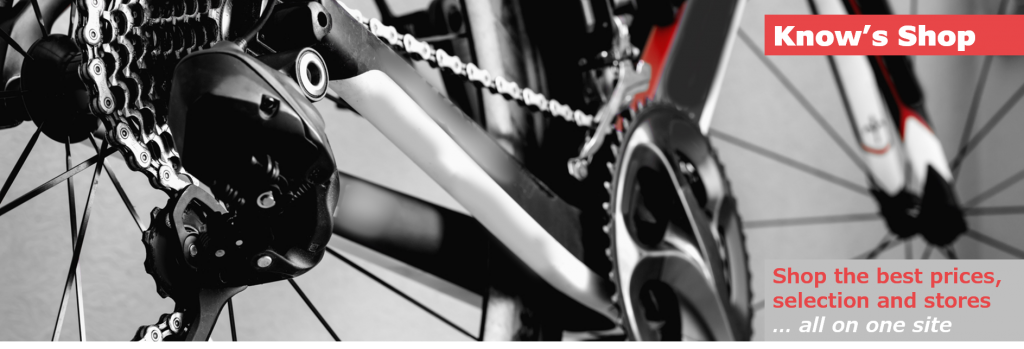
- Compare prices on in-stock cycling gear at 15 of my top-ranked stores
- Choose from over 75,000 bikes, wheels, components, clothing, electronics, and other kit
- Save money and time while supporting the site when you buy at a store after clicking on a link
THE EMERGENCE OF GRAVEL BIKE WHEELS
Over the last ten years, the range of drop bar bikes and gear, including wheels designed to perform best on dirt and gravel roads and trails has expanded quickly. We’ve taken to calling almost any unpaved road and many trails “gravel,” started using various types of gravel tires for the different classes of gravel surfaces, and have been putting them on a range of gravel wheels.
Road cyclists used to mount cyclocross clincher tires on a durable set of alloy road wheels to ride those same gravel surfaces. Not ideal, but that or a mountain bike were their only options to ride off-road.
Today, the best 700c alloy and carbon gravel bike wheels have 23 to 25mm wide internal rim widths and are both very responsive and compliant when riding off-road.
For me, these characteristics define “gravel wheels” and meaningfully separate the performance you get from them versus what you’ll experience on most road bike wheels, even when both use gravel tires.
Riding a gravel wheelset mounted with 35-45mm wide gravel tires, you can lower your tire pressure more than you would with road wheels, most of which have internal widths of 21mm or less.
Lower pressures give you better handling because your tires stay in contact with the surface more. You’ll enjoy better comfort as your tires and wheels soak up more of the energy from the uneven dirt and gravel roads you are riding and as your body absorbs less of it.
Wider internal and external rim widths, typically 30-32mm wide on a gravel bike wheelset will also support the tire sidewalls better than on narrower rim brake wheels. This will make the tire profiles more vertical and less rounded like a lightbulb. Better support will give you superior handling when you turn on loose or packed surfaces and when you move back and forth across a gravel road for a better line.
Superior handling will also improve your confidence on those consistently changing surfaces that are part of the challenge and fun of riding gravel. Improved confidence will also naturally lead to you riding faster or at least enjoying yourself more at lower speeds.
Carbon rim layup choices, shallower rim depths, and spoke materials and their bracing angles can make gravel wheels more responsive and compliant to complement the added comfort from wider tires and lower inflation pressure.
And hubs used on gravel wheels that engage more frequently can add to the responsiveness that comes from the rim and spoke material and configuration choices.
Adding it all up, using gravel wheels designed for gravel surfaces will give you better control, comfort, handling, confidence, speed, and enjoyment than road wheels with the same gravel tires on those surfaces.
That’s real performance improvement in a lot of areas.
Gravel bike wheels today are also tubeless-ready, disc brake, and use 12x100mm front and 12×142 thru-axles similar to modern road disc wheels. This combination gives you fewer flats, better braking, and more stability than clincher rim brake wheels with quick releases.
While most new road bikes have disc brakes and tubeless-ready wheelsets, many roadies still prefer clincher tires or use tubes inside tubeless tires. And quick-release axles and rim brake wheels are still the predominant road bike format in use.
So, true gravel bike wheels are quite a different animal than what many roadies ride on paved surfaces.
I’ve tested most of the gravel bike wheels in this review, both on gravel with gravel tires and paved roads with 28mm road tires. Few give you that sweet ride on both unpaved and paved roads.
There is, however, a small number of “all road” wheels that perform well on both road and gravel surfaces. We’ve tested and compared the leading models and put those in a separate review of the best all road wheels.
Stock wheels exist in the gravel bike world too.
As with most road bikes, gravel bikes also come with what’s called “stock wheels.” It’s a rather derogatory term which, for all but the most expensive gravel bikes, means a low-cost, minimally performing wheelset that bike brands usually spec to keep the sticker price down and their profit up.
Most stock wheels on gravel bikes are typically heavier and have poorer-performing hubs than aftermarket wheelsets sold on their own. You notice the difference immediately between a stock and aftermarket wheelset’s acceleration, responsiveness, and climbing and you probably wouldn’t want to push stock wheels too hard in corners or going through technical sections. Their performance is such that they usually will hold back the potential ride quality and enjoyment a bike’s frame and components are otherwise capable of giving you.
Stock wheels are the “weakest link.” Replacing them on a gravel bike is the second upgrade you should make, tires almost always being the first.
Gravel bike wheelsets group into familiar categories.
Bikes, wheels, components, and kits developed specifically for gravel riding are relatively new compared to road or mountain biking products. As most of us are coming to gravel from one of those other, more well-established cycling passions, I’m sure we realize that we are committing to a range of n+1 decisions when buying gravel gear.
Perhaps, for this reason, brands seem to be serving up fewer gravel bikes and wheelsets than road ones priced in the stratosphere and more options at lower price points.
Indeed, as I survey and select widely available gravel bike wheels for this ongoing review, I see a fair number of them priced and speced in a way that aligns with the upgrade and value-carbon categories I use to evaluate road bike wheels.
The most expensive wheelsets for gravel and often some of the best-performing ones usually also double as road bike wheels. I’ve written a separate post, The Best All Road Wheels, which reviews these wheels that are outstanding performers on both surfaces.
Of course, some dedicated gravel wheels are outstanding performers on gravel and just as expensive as dedicated road wheels.
And just like with road wheelsets, there’s quite a bit of difference in the performance delivered by gravel bike wheelsets from one category to the next. I’ll suggest which category or wheelsets are best suited to different riders at the beginning of each group of gravel wheelset reviews below.

Related reading:
THE BEST CARBON ROAD BIKE WHEELS
GRAVEL RIDING TECHNIQUE FOR ROADIES
WHAT MATTERS MOST
As with all of my reviews, I evaluate criteria in four categories – performance, price, quality, and design – and rate gear and kit roughly in that order of importance.
When it comes to road wheelsets, the performance criteria I try to get a handle on are speed/aerodynamics, stiffness, handling, acceleration/responsiveness, comfort, crosswind management, climbing, and versatility. The relative performance of each of these depends on whether I’m considering all-arounders, aero, climbing, or upgrade wheels.
You really can’t evaluate gravel wheels without first acknowledging and then accounting for the role of gravel tires. Tires are a far bigger factor in your gravel ride’s performance than on your road ride. Your gravel tire choice can totally obscure or greatly enhance the performance of a gravel bike wheelset in a way that doesn’t happen with road tires on your road wheels.
Likewise, the terrain, surface, and speed you ride gravel also influence many of these performance criteria more than they would on the road. Rolling down a hard-packed, relatively flat dirt road at 20 mph is a totally different “gravel” experience, almost a different sport than riding challenging, narrow paths with lots of gravel, 10% climbs, and fast descents, or hairy loose corners at 10-15 mph.
I’m not diminishing the role that different tires and terrain play when riding your road bike on paved roads. It’s just that you can really f* it up with the wrong gravel tires or create a sweet ride with the right ones in a way that’s hard to do with most road tires these days.
To account for the variability that tires and terrain can bring when evaluating gravel wheel performance, I attempt to neutralize their effect as best as possible.
Here’s how.
First, after testing and rating gravel tires, I picked a model that was the best performer across the widest range of surfaces to be my control tire to use for all gravel wheel testing.
Second, I bought another set of those same tires to do A-B comparative testing of different wheelsets back to back within a given day on the same route.
Next, over several months, I rode all the wheels at least a dozen times in different combinations of A-B tests on the same route, one that offered a range of terrain and classes of surfaces from paved to cracked paved to hard pack dirt to spread and dense gravel, to sand and ruts and technical sections with plenty of flats and climbs, etc.
As I’ve tested more wheels for this ongoing review, I continue to use the same benchmark tires on both the new wheelset I’m testing and the wheelset I’ve rated the best or one of the best.
You can see the route and protocol I followed same as in my gravel tire review here.
Finally, I rode the gravel bike wheels at the suggested tire inflation for the combination of tire and rim width and my rider weight. I used ENVE’s tubeless tire pressure recommendation chart and the SRAM tire pressure guide for this.
While I could have altered the pressure for a given wheelset to get more comfort or improved handling, adhering to a set of guidelines allowed me to compare wheelset performance under the same conditions better.
Yes, I did ride most of these wheels, also in A-B testing mode or on their own on other routes for variety and to avoid feeling like a cycling lab rat. Hey, I’m in this for fun too!
While enjoyable in their own right, none of these rides were as varied as my test route, and I didn’t learn much new about the wheels doing this. Beyond the pure pleasure of the rides, they often confirmed what I had concluded in the ride testing.
My fellow tester Conor uses a different protocol. He rides the same wheelset for a month or so on the Vermont gravel roads where he lives using tires he knows well.
These two approaches usually give us a broader perspective, usually complementing each other, across a wider range of conditions and riding styles than we could develop alone.
What matters most differs between road and gravel wheels.
While the same criteria I listed above matter when trying to distinguish the performance of gravel wheels and road wheels, their relative importance is different. Several things cause this.
For one, you don’t go as fast on unpaved dirt and gravel roads as you do on gravel, perhaps except when you are on Class 1 hard-packed dirt and, of course, on the paved roads between gravel sections of multi-surface rides. The average gravel ride speeds for a course with varied terrain and surfaces for most enthusiasts will range from 12 to 18 mph (19 to 29 kph). I don’t know about you, but I’m wrecked after I ride in the middle of that range on a challenging gravel course for 50 miles (80 kilometers).
For this reason, aero is (next to) nothing when it comes to gravel. Your tire’s rolling resistance will affect your speed far more on dirt and gravel than on paved roads.
While some of you may do most of your gravel riding on relatively flat and consistent surfaces, there can be a lot more variation in unpaved road and trail surface gradient and condition than you’ll ever see on paved roads. (Your tax dollars at work.) Riding on dirt and gravel, you’ll frequently need to change your line for a better path, and you’ll likely go uphill and downhill, dropping and increasing your cadence as you go across variable surfaces and grades a whole lot more than you would on asphalt.
As such, you accelerate more on gravel, so responsiveness is more important in rating gravel bike wheels than road ones. Hub engagement and rim weight play more of a role on these off-road surfaces, in addition to the responsiveness of the rims, hubs, and spokes working together.
We also ride gravel wheels harder and through more abusive environments than road wheels. They’ll naturally go through dirt, mud, and water that can get into the hubs in a way we’d seriously try to avoid when riding our road bikes. We’ll bounce our gravel tires and rims through potholes and over and against rocks and stones on a good day and perhaps fall over several times or crash occasionally on a bad one. Who knows what kind of vegetation, living or dead, from bushes to dead branches, will rub against or get into our spokes when we’re riding double or single-track sections?
All of this adds up to putting a higher premium on durability and quality when it comes to evaluating gravel wheels compared to road ones.
In The Know Cycling is ad-free, subscription-free, and reader-supported. If you want to help keep it rolling without any added cost to you, buy your gear and kit after clicking the store links on the site. When you do, we may earn an affiliate commission that will help me cover the expenses to create and publish our independent, comprehensive and comparative reviews. Thank you, Steve. Learn more.
ALLOY UPGRADE GRAVEL BIKE WHEELS
The first step toward a better ride on a new bike is replacing your stock wheels, those that came with your bike, with an upgraded gravel wheelset. Unless you bought a gravel bike that came with a solid set of carbon wheels, an upgrade is the most economical way to get a better ride after first getting a better set of tires. (Sadly, even tires that come stock on most new gravel bikes aren’t the best.)
Why? A good set of upgrade gravel wheels will have a wider internal rim width, likely somewhere between 2 to 6mm wider than the wheels that came with your bike, some of which aren’t wide enough to meet my definition of a gravel bike wheelset. These upgrade gravel bike wheels will give you a more comfortable ride as you’ll be able to lower the tire pressure with wider rims. They will also better support your tires, providing you with improved handling.
Many upgrade gravel bike wheels also have better hubs and lighter rims than you’ll find on your stock wheels. This will improve your acceleration and make climbing a bit easier.
All of these types of improvements are true, and even more so for the value-carbon and all road category gravel bike wheelsets reviewed in the sections below. However, carbon wheels could cost you 2x to 3x the $700-$1200 you’ll pay for upgrade wheels from established brands.
From my experience with wheels in all three categories, I’ve found that upgrade wheels are best for relaxed rides at relatively low average ride speeds (10-13mph), on flatter terrain, and over more consistent Class 1 (hard-packed dirt) and Class 2 (spread gravel) surfaces.
If that description fits you and the way you ride, you don’t need better performance than what these wheels give you.
Of the upgrade gravel wheels I’ve tested, I noted differences in their response to my accelerations, their ability to climb, the comfort they provide, how smoothly they roll, and how their freehubs sound while coasting. They all felt sufficiently stiff when I rode them hard going uphill and handled similarly on downhills and flat terrain. All held up well over the months I rode them.
Here’s my comparison of wheelsets in this category are my individual reviews that get into their differences.
MAVIC ALLROAD SL – MORE RESPONSIVE AND BETTER CLIMBER
MSRP/RRP US$890, £590, €715. Available through this link to recommended store BTD (BikeTiresDirect) 10% off w/code ITK10 and Competitive Cyclist
Alloy gravel wheelsets usually stand out for what they don’t do as well as others, rather than where they perform better than the rest.
However, as I rode the Mavic Allroad SL back to back against other alloy wheelsets on my gravel test loop on multiple days, I found it a thoroughly enjoyable experience.
For an alloy set, it’s refreshingly responsive to short accelerations and line changes. While there’s not the snap you experience with some carbon wheelsets, the Mavic Allroad SL follows your lead without hesitation.
It’s also a decent climber and clearly better than most alloy gravel sets I’ve ridden. You won’t zoom uphill riding them, but these Mavics don’t slow you down the way you might expect a wheelset of its weight (1740 grams actual).
I can’t uncover any particular design aspects that explain the Allroad SL’s better responsiveness and climbing performance. There is no significantly different hub engagement (ratchet, 40 points of engagement), spoke design (steel, bladed, 24 front and back, two-cross), or rim specs (24.7mm internal, 28.6mm external, hookless, alloy).
But, in my A:B, B:A, and occasional A:B:C wheelset comparative ride testing, these two aspects of the Mavic Allroad SL wheels made for a better ride experience. And its quiet, smooth-rolling freehub adds to the peace many of us seek when riding away from busy paved roads.
There are more and less comfortable alloy gravel wheels. This Mavic’s stiffness is also on par with most others in this category of wheels. And they handle well, though no better or worse than most.
No, it doesn’t perform at the same level as carbon gravel wheelsets. Like most alloy wheelsets, this wheelset is best suited to non-competitive riding on Class 1 dirt and Class 2 gravel roads without a lot of vertical.
Yet among its peers, the Mavic Allroad SL is one of the better options.
HED EMPORIA GA PERFORMANCE – COMFORT WITH A BALANCED CHARACTER
MSRP/RRP US$750. Available through these links to recommended stores BTD (BikeTiresDirect) 10% off w/code ITK10, Performance Bike.
Born, tested, (and photographed) as the Eroica, HED changed the name of these wheels to Emporia GA Performance shortly before I wrote this review. No worries. Nothing about the product itself is different other than the name.
HED now uses the Emporia name for its line of gravel wheels. GA stands for gravel alloy. GC for gravel carbon. You can choose between HED’s Performance hubset, the one I rode for this review, or, for $200 more, the Sonic hub, which goes on the Emporia GA Pro wheelset.
Overall, the Emporia GA Performance is a solid wheelset for those of you who should be attracted to upgrade gravel bike wheels – you’re on a budget and riding at lower speeds, flatter terrain, and hard pack dirt or spread gravel surfaces rather than those enthusiasts doing faster, more varied gravel challenges.
Comfort is the Emporia’s strong suit compared to other upgrade wheels I’ve ridden. While you can always lower your tire pressure on any wheelset to get a more comfortable ride, you may give up some handling and responsiveness if you go too far. Riding the Emporia and other wheels in this review at the pressure suggested for the combination of their internal rim width, my control tire’s width, and my rider weight, this wheelset was among the most comfortable upgrade wheels.
When I accelerated on the Emporia or headed up a 5% or steeper climb, these HEDs performed nearly as well as the best hubs in this category. Perhaps it’d be equivalent or better with the Sonic hub that HED puts on the Pro model, but I wasn’t disappointed with what the Performance gave me.
Likewise, the Emporia GA Performance wheels are plenty stiff enough and handle well for the kinds of efforts I was putting out on a wide range of terrain and gravel classes on my test track.
You can hear the Emporia’s freehub when coasting, but it’s not particularly loud or high-pitched. While not the smoothest rolling of the upgrade wheels, the Performance’s hubs didn’t create a rougher ride than the surface beneath me delivered on its own.
A few dings aside, these wheels held up well over months of testing in dusty, sandy, muddy, and rocky conditions that go along with gravel riding. The wheels remained true, I didn’t notice any difference in how the hubs rolled and found no water got past the hub seals.
These wheels came in at 1648 grams without valves or tape. They measured 24.1mm deep, 24.9mm wide between their bead hooks across the inside of the rim, and 30.4mm wide outside.
DT SWISS GR 1600 SPLINE – FEEL THE POWER
MSRP/RRP US$710, £540, €650. Available through these links to recommended stores Competitive Cyclist, Performance Bike and Tweeks
If you like to push yourself hard on gravel, and do it on a budget, the DT Swiss GR 1600 Spline is the wheelset for you.
It’s laterally stiffer than any other alloy gravel wheelset I’ve tested. When you throw down some serious power on a flat, hard ride, you can almost feel the power flowing directly through these wheels.
Getting the GR 1600 up to speed takes a bit of work. It’s more of a progressive, steady response than a snap to attention. That makes for less nimble line changes but a committed response to whichever you choose.
With the right tires for the surface, I could rail fast corners and felt confident rolling downhill.
The DT Swiss GR 1600 Spline’s stiffness and efficiency translate well to the ground going uphill. But it still takes more effort than most to work against its heftier weight (1850 grams actual).
Its comfort is on par with most in the alloy gravel category. At 24mm internal and 28mm external, the rim widths are a hair narrower than most but not enough to limit your choice of tires and inflation levels that can improve your comfort without affecting your handling.
The DT Swiss 350 hubs, a durable, proven set, roll smoothly and quietly. And the off-white hub shells add a bit of uniqueness to the wheels.
Ideally, the DT Swiss GR 1600 Spline wheelset is best suited for a powerful rider on relatively straight and flat or rolling terrain. It gives as good as it gets, in a gravel power kind of way.
Note that DT Swiss has updated the decal design of those in the photos of the wheels I tested. They’ve made no other changes to this model.
EASTON EA90 AX – SOLID, SMOOTH ROLLING
MSRP/RRP US$800. Available through these links to recommended stores Performance Bike
Hub performance seems to drive noticeable differences among the gravel wheelsets I’ve tested in the upgrade category, as many of the results of my evaluation of other criteria are quite similar.
Easton’s EA90 AX gravel bike wheelset is built around the company’s Vault hubset. It’s solid, smooth rolling, and relatively quiet, almost unnoticeable, coasting over loose dirt or gravel surfaces.
As I’ve found on Easton’s road bike wheels, which use the same hubs, they also give you a great ride off-road. Rolling through the elements of dirt and gravel, they seem unperturbed and no worse for wear after a lot of hard riding.
The Easton Vault rear hub doesn’t engage or spin up as quickly as what I experienced on HED’s Emporia GA Performance wheelset. This makes the EA90 AX a bit less responsive to accelerations and, while about 80 grams slimmer, it’s not as good on shorter, punchy climbs.
In addition to the smoother rolling and relatively quiet ride, these wheels are also comfortable though nothing out of the ordinary in this category. The same goes for their stiffness and handling.
The EA90 AX wheels come with durable, pre-installed rim strips that appear to be molded to the rims. With the multiple tire changes I made on these and other rims, the Eastons clearly held up the best and would make your life easier if you changed out your tires frequently.
My scale had these wheels at 1579 grams, including the aforementioned strips, below others and Easton’s own 1625g claimed weight. You don’t see that happen often. At 19.8mm deep and 28.2 mm outside width, they are both shallower (by about 3mm) and narrower (2mm) than the HED upgrade gravel wheels. Neither of those measurements matters to this Easton gravel bike wheelset’s performance as much as its inside width, which, like the others in this review, comes in right around 25mm, specifically 24.8mm with my calipers.
FULCRUM RAPID RED 3 – NOT A COMFORTABLE OR RESPONSIVE UPGRADE
MSRP/RRP US$800, £555, €780. Available through this link to recommended store Merlin Cycles
The Fulcrum Rapid Red 3’s performance does not compare favorably to other alloy upgrade gravel bike wheels I’ve tested. Although it comes stock as the Rapid Red 300 on some mid-priced gravel bikes, its position above the Rapid Red 5 (aka Rapid Red 500) in Fulcrum’s line suggests that the company intended it to be an upgrade over what you get with many new gravel bikes.
Those opting for an alloy upgrade wheelset should get better performance in at least one or two key areas to justify the cost of changing out stock wheels.
The Fulcrum Rapid Red 3 wheelset handles on par with other alloy upgrade gravel wheels I’ve tested and climbs acceptably well for its weight. It performs better on these characteristics than most stock wheels. It’s not the wheelset you’d want for your fastest, hilliest gravel rides, but no alloy wheelset is when carbon gravel wheels are available.
Disappointedly, the Fulcrum Rapid Red 3’s compliance is subpar even on Class 1 dirt and Class 2 gravel roads, the mildest gravel surfaces you’ll ride. While not harsh, I couldn’t find an inflation pressure at which I could call the wheelset comfortable.
This was the case on both the Red 3 sent to me by BTD (BikeTiresDirect) for testing, which I rode under my own gravel bike, and a Red 300 that came stock on a US$4000 gravel bike which coincidentally arrived for review a couple of weeks later.
And while the hubs roll smoothly and the freehub coasts silently, the rear hub engages slowly. The lag is quite noticeable when you want to accelerate away from a bad section of the road to take a new line or just pick up the pace. Rapid seems to be a misnomer.
The Fulcrum Rapid Red 3 is priced competitively in the US and is more expensive outside North America than other alloy upgrade wheels. Unfortunately, it doesn’t match their performance level in the areas that motivate you to upgrade your wheels.
VALUE-CARBON GRAVEL WHEELSETS
Let me use the differences in road bike wheelset categories to provide context for gravel ones.
A value-carbon road bike wheelset makes good sense as a replacement for your stock road wheels. Compared to alloy upgrade road wheels, you can get deeper, potentially more aero-value, carbon wheels for higher road speeds, somewhere in the US$1000 and $1500 price range or about US$500 more than you’d spend on the alloy upgrades.
While the weight of value-carbon and alloy upgrade road wheels are often about the same and have similar quality hubs, some value-carbon road wheels are stiffer, handle better, or are more comfortable thanks to what carbon can give you vs. the limitations of alloy rims you get in upgrade wheels.
And they are carbon!
Who wants to ride alloy wheels anymore when you can ride carbon ones?
That’s where I should have started since it’s what motivates many people to look at value-carbon wheels in the first place. “I want carbon wheels, and I want to pay as little as possible for them” is usually how it starts for many of us roadies.
That’s the rationale behind value-carbon road bike wheelsets.
However, the value-carbon gravel bike wheelset category makes less sense to me. Carbon and low price is also likely the primary motivator for this category.
As I wrote earlier, you’ll get little to no aero benefit from your wheels at the speeds we mere mortal enthusiasts ride dirt and gravel. So, even though you can get value-carbon gravel bike wheelsets that are 40 or 45mm deep, far more than the 20-25mm rim depth of upgrade ones, it wouldn’t help all but elite, professional riders. And as pros, they’re sponsored and likely riding higher performance, dedicated carbon gravel wheelsets or all-road ones.
When riding gravel bike wheels, I believe you’re better off with a lighter set than a deeper one. The lightest value-carbon gravel wheels weigh between roughly 1400-1450 grams, a difference you’ll notice when compared to the 1575-1675g weight of most of the wheels in both the value-carbon and alloy-upgrade categories.
Few value carbon wheels are both light and wide with 25mm inside and 32mm outside widths ideal for good handling and comfort.
The reasons I can see for spending the extra money on a value-carbon gravel wheelset over an alloy upgrade one are:
- Better performance on gravel so that you can ride faster or more comfortably on more challenging or longer rides.
- Better performance on the road using your gravel bike wheels on your road bike instead of stock or upgrade road bike wheels. This would give you a reason to use your gravel bike wheels on both your gravel and road bikes.
- “I want carbon gravel wheels and I want to pay as little as possible for them.”
As you’ll see in my ratings and reviews below, most of the value-carbon wheels I’ve tested to date are a bit of a mixed bag for the first two reasons above.
But they are all carbon!
There is one point to add about wheelset quality that favors value-carbon gravel bike wheels over upgrade ones.
Some think carbon wheels are more prone to damage than alloys when riding dirt and gravel surfaces. The opposite is actually true, assuming the carbon layups are well made and come from companies who design, test, and either do or oversee their rim manufacturing and wheel assembly.
ENVE AG25 – ONE OF THE BEST PERFORMERS ON GRAVEL AT A VALUE PRICE
MSRP/RRP: US$1400, £2100, €2200. Available through these links to recommended stores BTD (BikeTiresDirect) 10% off w/code ITK10, Competitive Cyclist, and Performance Bike.
When I first rode the ENVE AG25 gravel wheelset, a song came into my head. It doesn’t happen often when I go out for a ride. And when it does, it’s often a song I just heard before getting on the bike and doesn’t stay there long.
But when it happened with the ENVE AG25, it stuck and still does. The music suits my mood while riding these wheels, and the words provide a pretty good metaphor for their performance.
The song? Smooth. The 1999 Grammy-award-winning hit features a knockout lead guitar performance by Carlos Santana with words written and sung by Rob Thomas, the gritty-voiced lead singer of the 1990s pop band Matchbox Twenty.
Haven’t heard it for a while? Listen here, my friend.
Santana’s playing is downright energizing. It’s the kind of energy I want to draw on when I’m doing a long gravel ride that I’m psyched about, especially if it’s an event with a mass start where my heart is already calling for it with every pulsing beat.
In the first few miles of that kind of ride, you need to “stay so cool” and “be so smooth” to avoid blowing up when it feels like you’re just “seven inches from the midday sun.”
And Thomas’ hook, the vulnerable yet impassioned“gimme your heart, make it real, or else forget about it” is the same attitude I want from myself and my gear on every gravel ride. Be on my game from the start or don’t even bother to show up.
The ENVE AG25 gravel wheelset performs at the high energy level I get from Santana’s guitar. It’s very responsive to accelerations and line changes and handles precisely as you make sweeping turns.
Yet, throughout a hard ride, the ENVE AG25 is also comfortable and relaxed, the gravel ride equivalent of so smooth.
There’s a massive volume to spread your air pressure in the ENVE AG25’s rims. I measured them at 25.0mm inside, 33.5mm outside width. Riding them with several small knob tires in the 40mm wide range, they were notably more comfortable than others in this category of value-carbon wheelsets.
The AG25 also climbs evenly, comfortably, and with little effort – so smooth. Weighing just 1435g on my scale, 150 to 250g lighter than most gravel wheels in the value-priced category, and using the Industry Nine 1/1 hubset with 4 degrees of engagement probably has something to do with it.
On several occasions during my couple months of tests, I rode the ENVE AG25 and ENVE’s more expensive all-road SES 3.4 back-to-back on the same day on the 13-mile, mixed surface, multi-class gravel route I use as a test track. Despite trying, I couldn’t tell their performance differences while riding gravel. Perhaps a better rider could.
Sure, the 3.4 is more aero as it is nearly 2x the AG25’s 21mm depth. But most enthusiasts, including me aren’t going to ride fast enough on dirt and gravel roads and trails for aero considerations to come into the picture.
And yes, the 3.4 is supremely versatile – it can be your all-around and climbing road wheelset and your gravel grinder. That’s a good reason to pay more for the SES 3.4 if you want that one wheelset to rule them all. You can read my complete review of it here.
But if you’re looking for a dedicated gravel wheelset, I’ve not found a better performer than the value-priced ENVE AG25, and none nearly as good for less. At US$1400/£2100/€2200 for the AG25, it’s priced at the top end of the value-carbon category but well below those in the performance-carbon range that the ENVE AG25 is on par with.
In the same way that the song ends with the repeated refrain, “Let’s don’t forget about it….”, it’s hard to get this wheelset out of my mind and off my gravel bike to make room to test others.
For those of you who prefer 650b size gravel wheels.ENVE also makes the AG28, available at the same stores through the links above.
CAMPAGNOLO LEVANTE – COMFORTABLE ON ALL-DAY ROUGH RIDES AND CLIMBS
MSRP/RRP: US$1750, £1350, €1400. Available through these links to BTD (Bike Tires Direct) 10% off w/code ITK10, Competitive Cyclist, Performance Bicycle, and Merlin.
If you regularly do long gravel rides with a lot of climbing and a range of rough road surfaces, the Campagnolo Levante is a good “silent partner” to ride along with you.
My fellow tester Conor rides the Vermont Green Mountain gravel roads and trails and lives for the weekends when he can do it all day. The Levante perfectly suits the climb after climb after climb nature of those rides on most course that give you double-digit percentages of Class 1, 2, 3, and 4 surfaces no matter which way you go.
My Italian isn’t very good, but I believe there is some connection between the word “levante” and the English word “rising.” If so, that’s a good description of one of the things these Campagnolo wheels do well. While they’re not the lightest (1527 grams measured) or stiffest gravel wheels around, they do go uphill better than most in the value-carbon gravel wheelset category that their relatively modest and often discounted price puts them in.
Campy could have also named this wheelset the Comodo or “comfortable.” Conor remarked that they soak up the bumps and road chatter so well, and their cup-and-cone bearing hubs are so quiet that they seem to disappear beneath you.
When he was out on 4 to 6-hour rides on challenging terrain and surfaces, the combination of Levante’s easier climbing and quiet comfort gives you an easier and more enjoyable day on your gravel bike.
Recognize that these are really best as all-terrain, all-surface endurance wheels. We don’t find them as snappy or responsive as some of the more expensive all-road wheels or even the similarly priced ENVE AG25.
On smoother dirt and gravel road races where speeds pick up, pacelines form, and turning precision is key to maintaining your position, the Levante doesn’t excel. But neither do most wheels in this value carbon category.
While perhaps wasted on a wheelset that’s likely to get as dirty as you after a long day riding off-road, the Levante cleans up better than most of us. Its rim finish gleams, its hubs have an hourglass profile, and its logos are stylish. I seemed more motivated to wash my bike after a day of riding with the Levante than most other gravel wheels.
If nothing else, that got me off to a better start the next day than I’d have had with a dirty bike.
SHIMANO GRX WH-RX870 CARBON GRAVEL – COMFORTABLE FOR STEADY RIDING
MSRP/RRP: US$1400, £1225, €1350. Available through these links to recommended stores BTD (BikeTiresDirect) 10% off w/code ITK10, Competitive Cyclist, Performance Bike, and Tweeks.
Everything we’ve come to expect over the years from Shimano wheels comes through in the GRX WH-870, their first carbon gravel wheelset. It’s a solid performer across the board, though it doesn’t stand out against the competition in any area. It’s well-made, modestly badged, and fairly priced.
Being a Shimano product, it has the largest dealer support network in the world. But you’ll likely not need to visit a dealer if this carbon gravel wheelset is as durable and easy to maintain as most products from Shimano. And from fellow tester Conor’s and my experience riding it hard for a few months, there’s nothing even to hint that the GRX WH-870 will be any different.
Shimano’s highly lauded cup-and-cone road hub bearing design carries through to the GRX carbon gravel wheels. It’s wonderfully quiet and peaceful and rolls smoothly when you’re out for an easy ride on Class 1 dirt or Class 2 light gravel roads. However, you can only get this wheelset with a Shimano/SRAM 11-speed suitable HG freehub, so those of you who use SRAM AXS 12-speed drivetrains and need XDR freehubs are out of luck.
On rough surfaces, the wheels absorb chatter and bumps as well as the ENVE AG25 and Campy Levante gravel wheels, and better than the others in the value carbon category. Like many leading carbon gravel wheels, the Shimano GRX rims’ inside width measures 25mm wide. That allowed us to run inflation pressures lower than those of the less comfortable wheels in this category while still maintaining good traction and handling performance.
In addition to using my benchmark 40mm Continental Terra Speed tires on these wheels for A-B comparisons against the ENVE with the same tires, Conor and I installed several other models and widths of rubber on the GRX. We independently noted how relatively easy it was to mount tires on these rims and how well they held air pressure.
Regardless of the surface, including rides when you have a fair amount of paved roads or you cover dirt, gravel, rocky, and technical gravel classes, the Shimano GRX WH-870 carbon wheels don’t perform as well as the ENVE AG25 wheels when you want to go faster. That puts the GRX on par with the other wheelsets in the value carbon category.
We didn’t find the GRX as responsive or lively when accelerating up a climb or making quick line changes on a speedy course as the better gravel wheelsets. I also thought the rear hub engaged slower than most in this category. And while the handling was competent, we didn’t find it as precise as the ENVE.
Bottom line? The Shimano GRX carbon gravel wheelset is a balanced performer ideal for the gravel rider who prioritizes confidence and comfort on a steady ride over top-level performance and speed for a challenging day out.
REYNOLDS ATRX – A STEP UP IN COMFORT AND HANDLING FROM UPGRADE WHEELS
MSRP/RRP: US$1550, £1500, €1800. Available through these links to BTD (BikeTiresDirect) 10% off w/code ITK10.
While the Reynolds ATR X performs better than alloy wheelsets on dirt and gravel roads, it doesn’t match the level of the best value-carbon wheelset.
I immediately noticed the improved handling and greater comfort riding the ATR X compared to even wider alloy upgrade wheels. Perhaps it’s the properties of carbon or how Reynolds lays it up, but it’s clearly a step up. You go where you want to with less effort, both steering your bike and feeling the surface.
Together that creates a more enjoyable ride, and if you want, you can challenge yourself to ride a bit harder and more aggressively.
Yet, this Reynolds wheelset wasn’t as comfortable on dirt and gravel as others, even when I reduced the tire pressure on its 23mm internal width rims.
As a roadie riding gravel, you notice certain things when riding the changing surfaces and short, punchy pitches off-road that you don’t when riding pavement. Quickly accelerating and getting up short climbs without losing a whole lot of momentum is key.
Unfortunately, neither of these were strong points for the ATR X. It seemed to take me a couple of crank revolutions before my acceleration efforts kicked in, and they didn’t get uphill nearly as well as the others in this category.
That climbing performance carried over when doing back-to-back comparisons on alpine asphalt road climbs. The steadier ramp you find on a paved road surface didn’t require many acceleration changes from the Reynolds wheelset, but it still felt like more work compared to other value-carbon wheels going up long, 5-10% climbs.
On the road at aero speeds and with 28mm tires mounted up, the ATR X maintained my momentum reasonably well though not much better than others in this category and clearly below the level of performance-carbon wheels. Cruising around at slower speeds during recovery delivered average comfort.
When riding dirt, gravel, or paved roads, it was hard to find an argument for the Reynolds ATR X wheelsets against others in the value-carbon category. They do provide a step up from gravel wheels in the upgrade category, but there are better choices if your budget limits you to value-carbon.
The ATR X wheels I tested weighed 1606 grams, including the pre-installed rim strips but not the valves on my scale. The rims measure 40.1mm deep, 23.1mm wide on the inside, 30.9mm outside near the rim-tire interface, and 32.1mm at the widest point of their toroidal profile. The rim width well exceeds the tire width with 28mm road tires installed. The 4-pawl rear hub engages every 10 degrees. You’ll find 24 Sapim Race round spokes on both the front and rear wheels.
ELITEWHEELS DRIVE G45 CS – BEST ON FLAT, DIRT AND LOOSE GRAVEL ROADS
MSRP/RRP: US$1269, £1005, €1159. Use code ITKCycling to get a 15% discount when you order from the Elitewheels website.
While we’re big fans of the Elitewheels Drive 50D in the value carbon road wheels category, the similarly speced and competitively-priced Elitewheels Drive 45G CS wheels intended for gravel were disappointedly average.
One key difference between these Drive 45G CS wheels and other gravel wheels is their use of carbon spokes, hence the CS designation. In theory, carbon spokes should lead to a low-weight, responsive wheelset that improves cornering and power transfer over otherwise similar wheels with steel spokes.
Combine that with what I measured to be its 1347g weight, 24.4mm internal width and 45.5mm depth, and ceramic bearing, 4-pawl HG or 6-pawl XDR hubs, the Drive 45G CS would seem to have a lot going for it on paper.
But on gravel, my fellow tester Conor and I found them most suitable for a limited range of gravel surfaces and terrain.
They’re at their best, though no better than the average gravel wheelset, on flatter, Class 1 packed dirt and Class 2 spread gravel surfaces. They roll along with good momentum and don’t seem affected by side winds on open roads.
When the road turns up, however, neither Conor nor I felt any added benefit from their low overall weight or any spring coming from the hoop-spoke-hub combination that makes up the G45 CS wheelset. While no worse than the average, value-carbon gravel wheelsets, they don’t climb nearly as well as the slightly more expensive, far shallower, slightly heavier ENVE AG25 that leads this category.
On rougher surfaces, and even on relatively smooth ones, the G45 CS isn’t terribly comfortable. You can really feel the road beneath you. I rode them with 40mm Conti Terra Speed and Tufo Swampero at about 32 psi under my 150lb body mass, while Conor tested these wheels with 44 mm wide Swampero and Tufo Thundero at similar pressures for his 15lb heavier build.
Conor also struggled to get both pairs of Tufo tires mounted and had no better luck with a Rene Herse endurance casing model. This was a show-stopper, as he often changes tires depending on his planned ride.
My biggest put-off was the loud freehub noise, nearly as vocal as the Hunt gravel wheelset. I appreciate that most hubs aren’t quiet, and some prefer a distinct buzz from their rear wheel when coasting. If that describes you, you’ll feel at home with the Elitewheels model hub used here.
When changing lines or accelerating up climbs, the G45’s stiffness and low weight don’t translate to responsive, quick maneuvering. They’re not noodly and transfer your power well; they just don’t do so quickly or handle as precisely as the best gravel wheels in this price range or more expensive all-road wheels that excel on gravel and paved roads.
While we had higher expectations, the attractive, glossy-coated, marble-finished Drive G45 CS is still a better value for similar performance than several gravel wheels from better-known brands in this value-carbon gravel wheelset range. And if you use the code ITKCycling, you’ll get a 15% discount off their US$1269, £1005, €1159 price on the Elitewheels website.
Elitewheels also sells a steel-spoke version of this wheelset called the Drive 45 SS. While we haven’t tested them, those spokes may have more give and yield a more comfortable ride than the carbon spoke model we reviewed. They’re also less expensive, selling for US$1039, £823, €949 with the same discount available.
ZIPP 303 S – BETTER ON PAVED THAN GRAVEL ROADS
MSRP/RRP: US$1400, £1090, €1320. Available through these links to recommended stores BTD (BikeTiresDirect) 10% off w/code ITK10, Competitive Cyclist, Performance Bike, Merlin, and Sigma Sports.
While Zipp claims the 303 S offers the versatility to ride fast “no matter the road surface,” compared to other value-carbon road and gravel bike wheels I’ve ridden, it’s a far better choice for paved roads than unpaved ones.
While it says Zipp on the rims, it’s very un-Zipp-like in my experience.
First, it sells for far less than other Zipp wheelsets. Unlike any other Zipp wheelset before it, the 303 S is hookless and can only be ridden with tubeless tires.
Second, the performance is the opposite of what I’ve experienced with other Zipp wheelsets. Specifically, it has better than average lateral stiffness and average vertical compliance (aka comfort). The added stiffness is welcome on paved roads, especially when climbing and for heavier riders. And, the average comfort isn’t a problem. It’s just not what I’ve come to enjoy about Zipp wheels.
The 303 S comfort is below par on dirt and gravel compared to other value-carbon wheels I’ve ridden. While Zipp rounds up the 22.5mm inside width I measured to claim 23mm, it rides more like a 21mm wheelset with the 35 to 40mm gravel bike tires I tested.
Despite wide gravel tires, narrower rims usually provide less comfort and worse handling performance on dirt and gravel than wider ones. Indeed, I found the Zipp 303 S lacked both compared to wheels with 25mm internal width.
While their stiffness helped make them excellent road climbers, the Zipp model 3-pawl hub was relatively quiet when freewheeling but a bit slow engaging during acceleration and on short climbs.
The Zipp 303 S I tested weighed 1556 grams, with its rims thankfully taped at the factory. It uses 24 bladed spokes front and back and Zipp’s third-tier 76/176 hubset. It runs 45.2mm deep, 22.5mm wide across the inside of the hookless rims, and 27.5mm wide outside.
ROVAL TERRA C – LOW-PRICE CARBON FOR FLAT GRAVEL TERRAIN
MSRP/RRP: US$1000, £1150 €1400. Available through these links to Competitive Cyclist, Performance Bicycle, and Sigma Sports.
The Roval Terra C is the lowest-priced carbon gravel wheelset in Roval’s line. Selling for US$400 less than the Terra CL and US$1400 below the Terra CLX, I often wondered what performance gaps I would fill by buying another letter or two in Roval’s gravel wheels of fortune.
At its core, the Terra C is a comfortable wheelset. At the right inflation pressure and with a good set of 38-40mm wide small knob tires suited for the combination of paved and Class 1 through 3 dirt and gravel I rode it on, it was acceptably comfortable – not plush but never harsh.
I also found it stiff enough and handled confidently in moderate riding efforts. With its gravel wheelset rim widths that I measured at 24.5mm inside and 29.9mm outside, that kind of performance made sense. Enough volume for comfortable, typically low gravel wheelset inflation pressure and enough rim width to support wide tires when cornering.
Pushing the Terra C to accelerate fast or climb steep terrain with ever-changing surfaces and pitches revealed its shortcomings. It paused a bit whenever I wanted to quickly accelerate or change line and struggled going uphill, at least more than my legs already did.
If the dirt and gravel roads and trails you ride on are more varied or you ride harder than the average grinder, you may find yourself wishing you spent a bit more to get better performance while still staying in the value-carbon category.
Likely to keep the price of the Terra C down, Roval uses the DT Swiss 370 hubset at the center of these wheels. While they are pleasantly quiet and roll smoothly, the freehub engages each next tooth only every 20 degrees or somewhere between 1/2 to 1/5 as often as other gravel and road freehubs. That, along with the wheelset’s 1626-gram weight on my scales, likely explains their acceleration and climbing weaknesses compared to other value-carbon (and upgrade) gravel wheelsets I’ve tested.
But on steady pitching, not too steep, and well-graded dirt or gravel roads where you can maintain steady speed or power output, the Terra C is totally good unless the pitch isn’t too steep. That’s the sweet spot for these value-priced, humbly decaled carbon gravel wheels.
HUNT 35 CARBON GRAVEL DISC X-WIDE – THEY DON’T PLAY THE GAMES ON PAPER
MSRP/RRP: US$999, £699, €939. Available through this link to Hunt.
On paper, the Hunt 35 Carbon Gravel Disc X-Wide looks to be a winner. It is one of the lowest-priced value-carbon wheelsets. Twenty-eight spokes in both the front and back wheels suggest it will be stiff for good power transfer and handling. Five degrees of freehub engagement was better than most and should make for a responsive wheelset that climbs well.
But as the saying goes, “they don’t play the games on paper”.
On gravel, the Hunt 35 Carbon Gravel isn’t as strong as I’d have expected based on its specs or as capable as others in the value-carbon gravel wheelset category.
Looking for this Hunt wheelset’s sweet spot, I tried a few different tires and inflation pressures in addition to the 40mm WTB Raddlers I’ve used to evaluate many gravel bike wheels at recommended pressure based on the tire size, inside rim width, and the combination of my body and bike weight.
The results were much the same. It’s not as stiff and handles with less precision than others in this category that I rode back to back on the same days and courses. Sluggish was the word I kept returning to describe how the Hunts rode when I pushed them hard on dirt and gravel.
Powering through looser surfaces like deeper gravel or soft dirt at a good speed, the Hunt 35 Carbon Gravel’s rear wheel also swims a bit, and the rear rotor will occasionally clang against the pads.
On the positive side, its freehub engages quickly, as fast as any I’ve ridden. Yet that strength is neutralized by a lack of stiffness. The result is responsiveness and climbing more in the middle of the pack among Hunt’s carbon-value wheelset peers.
It is reasonably comfortable, more so than some and less so than others. The freehub is also louder and higher pitched than most though somewhat dampened by the sound of your tires against the dirt and gravel surface.
For the UK and European gravel cyclist, or at least if you live in those areas and will be buying gravel wheels in GBP or EU currencies, the Hunt 35 Carbon Gravel X-Wide is a great value if your terrain and gravel surfaces aren’t very demanding and you aren’t out to win competitions or push yourself to ride harder and better over time.
For US gravel grinders, shipping and raw material prices have forced the price of this Hunt wheelset up to where it costs nearly the same as wheelsets in this category that outperform it.
PERFORMANCE-CARBON GRAVEL WHEELS
For experienced, fast, and aggressive gravel riding enthusiasts and those of us who aspire to fit that description (hello!!!), you want to ride performance-carbon wheels dedicated to gravel surfaces or all road wheels that perform at the same high level both on gravel and paved roads.
The dedicated ones we’ve tested gave us the kind of performance that’s unavailable from most upgrade or value-carbon gravel bike wheels and a level of confidence to let loose on unpaved roads.
The same goes for the all-road wheels on gravel. This group includes the likes of the ENVE 3.4, Bontrager Aeolus 37V, Zipp 353 NSW 303 Firecrest, and Roval Terra CLX II, which are also great road climbers, and the Zipp 454 NSW and ENVE 4.5 which are outstanding all-around road as well as fast wheels on flat and rolling terrain gravel terrain.
Yeah, they’re expensive. Priced around US$/£/€2000 and up, or 1.5x to 3x what you would spend on an upgrade or value-carbon gravel wheelset, you’ve got to have a deep bank account or a good justification for going the performance-carbon route.
Of course, this two-for-the-price-of-one justification holds only if you need or are planning to get a new set of road wheels and new gravel ones.
If you’re already good with road wheels, a dedicated performance-carbon gravel wheelset like the ones we’ve reviewed here will give you the best wheelset for either gravel racing or long-distance comfort. They are notably better at one of those specialties than almost all of the value-carbon gravel wheels my fellow tester Conor and I have ridden.
If you can swing it, justify it, or BS your way to spending it, I think they are absolutely worth the extra money.
DT SWISS GRC 1100 DICUT 50 – FAST, DURABLE, GOOD-LOOKING
MSRP/RRP: US$2910, £2400, €2400, available from BTD (BikeTiresDirect) 10% off w/code ITK10 and Freewheel
The DT Swiss GRC 1100 DICUT 50 gives gravel racers and regular gravel riders who occasionally race a top-performing, highly durable, and good-looking wheelset option.
That’s what my fellow tester Conor concluded after riding and racing these wheels for over 1,000 miles across Vermont’s range of dirt roads to technical trails and at the business end of several of the Green Mountain State’s top gravel events.
While the GRC 1100 DICUT 50 stakes DT Swiss’s place in the next stage of gravel wheelset evolution, its performance stands above its design.
It’s a “go-fast” wheelset in every sense.
It feels stiff and lively when you do hard accelerations from a slow or steady pace, ride through corners, or change your line on all but the steepest terrain.
The GRC 1100 is also surprisingly stable in stiff crosswinds on open roads. It seems to ride faster than any 50 mm-deep wheelset should in these conditions.
Its responsiveness, aero performance, and stability improve on what we experienced with the DT Swiss GRC 1400 Spline DB 42, the wheelset the GRC 1100 replaces, and one we ranked highly among dedicated gravel wheelsets.
And somewhat surprisingly, it rides more comfortably than the GRC 1400, a lighter and shallower wheelset.
No, it isn’t as plush as wheels that focus on comfort, like the Campagnolo Levante we recommend for all-day, adventure-type riding. But it’s also not harsh.
Instead, Conor found that if you, like him, are always pushing for speed and ride the full range of gravel class surfaces, the GRC 1100 DICUT 50s with a 45 mm-wide tire will give you a kind of Goldilocks “just right” amount of comfort.
While wheelset design doesn’t lead directly to performance out on the road or trail, DT Swiss created this model to be more aero for the 20mph/32kph and faster average speeds that top gravel racers now ride.
The rims measure 50mm deep and 36.5mm at their widest point. And, the rim profile recalls the toroid shape used in early Zipp and HED aero road wheels.
Notably different, however, the rim suddenly narrows from that widest point, at what almost looks like a bevel cut angle, ending at the rim’s tire edge with a modern-day road wheel’s internal width of 24mm and hooked rims.
The GRC 1100 DICUT 50’s bladed DT Swiss spokes and hidden nipples reinforce its aero intentions. The DT Swiss 180 hubs aim to make the wheels roll incrementally smoother. However, it is impossible to determine whether these components achieve their objectives from field testing.
The wheelset, with its rims, spokes, and hubs, looks stunning, and not just to Conor and me. Its rim shape, semi-gloss finish, and silver logo and graphics were magnets for positive comments from fellow riders.
The added depth and width make the GRC 1100 DICUT 50 quite heavy overall compared to most gravel wheelsets, though not much more than those from Zipp, ENVE, Hunt, and others with similar rim dimensions and racing intentions. These aren’t climbing wheels, but the added weight helps maintain your momentum across long, flat stretches of rough gravel surfaces at higher speeds.
Throughout our testing, the wheels were rock-solid. They emerged functionally and cosmetically unscathed with zero issues, and they remained true after several months of hard rides and races.
All of this comes at the high price. However, if the performance, design, looks, and durability that define the DT Swiss GRC 1100 DICUT 50 align with how you ride gravel and what you value in your gear, this is a hard wheelset to pass up.
CORIMA G30.5 – A ZEN-LIKE RIDE AND GRAVEL BEST PERFORMER
MSRP/RRP: US$1750, £2100, €2010. Available from Corima dealers.
The Corima G30.5 wheels challenge the expectations about what makes for a great performing gravel wheelset. Or at least my expectations developed from doing extended tests of more than a dozen gravel wheelsets in the last couple of years.
Generally speaking, I’ve found the best-performing gravel wheels are light for climbing, wide for low-pressure tire-enabled comfort, stiff for good handling but not so stiff that it takes away from compliance, and have a stealth black finish because… well, they’re just going to get dirty anyway and you won’t see the finish.
If I knew nothing about Corima wheels and their G30.5, and I knew very little because Corima is a niche brand where I live, and the G30.5 is the first gravel model they’ve sold, I wouldn’t have expected much from sizing them up when they first arrived.
With their glossy carbon-weave finish, weighing about 200 grams more and measuring 3mm or so less than other performance-carbon wheels, fellow gravel tester Conor and I thought these might be average performers. My spirits were further dampened by the list of specifications on the G30.5’s webpage that started with “mandatory terms” that included “only for gravel use” and a short “list of tires that must be used with our Gravel G30.5 wheels.”
It felt like I was back in Madame Eynon’s freshman-year French class.
Riding the G30.5 quickly cleared the mind of those expectations. Using top-rated 42mm Specialized S-Works Pathfinder tires (not on the Corima mandatory tire list… whatever!) on the Bontrager Aeolus RSL 37V for nearly a month and then on the G30.5 for another month, Conor felt a clear improvement in ride comfort from the Corima.
For example, when riding over typical gravel chatter on a freshly graded dirt road, the Corima G30.5 smoothes out the vibrations well. The difference is less noticeable on bigger bumps like severe washboards or rocks. But on regular dirt roads, the G30.5 makes for a more comfortable ride.
Handling is also a pleasure with these Corima wheels beneath you. They track well and have no side-to-side flex, no matter how hard you push them.
The DT Swiss 240 Ratchet EXP hubs feel smooth and engage quickly enough for most gravel riding. The previous generations of DT Swiss 240 hubs were durable and maintenance-free. While they grew noisier during our two-month test period, we had no issues with the performance of the latest EXP ones used in these Corima wheels.
Conor capped his experience with the Corima by riding them in the 160K D2R2, the granddaddy of New England gravel events. After an extremely hot and dry summer leading up to the ride, the course was bone dry, and surfaces were hard and roughly shaped as a result. Severe washboards abounded, and exposed rocks and potholes were plentiful.
Conor reported that through it all, these wheels felt well balanced, tracked and handled well, and changed directions and leaned over to go wherever he pointed them without complaint. The construction of these wheels really hit the holy grail of laterally stiff and vertically compliant.
Despite the distance and surface conditions, his hands and arms felt somewhat less fatigued than they might on similar rides, possibly owing to the vibration absorption offered by the G30.5 wheels. That made the post-ride wrist curls with a beer in one hand and barbeque in the other all the easier.
Oh, and the glossy, carbon-weave finish is actually quite attractive. Very French in that way. Makes you want to keep the wheels clean. (Wants and needs are different things, however.)
While not also a climbing road wheelset, the Corima G30.5 is a highly enjoyable option for dedicated gravel riding.
OTHER WHEELS ON MY TO-REVIEW LIST
While it feels like we’ve tested and compared a good number of gravel wheels with the reviews you see above, it always seems like there are more I’d like to ride if time and budget allow.
Perhaps like you, I keep a wish list of wheels I’d like to check out. I plan to work through that list over the next period of time.
If there are wheelsets I’ve not reviewed or mentioned that you have your eyes on, let me know in the comments section, and I’ll look them up.
Because they aren’t available to the geographically diverse group of enthusiasts that read the site, I tend not to test custom-built or regional brand wheels. And while I’ve reviewed road wheels made in factories that good branders or little-known brands sell direct but don’t add much, if any, design or testing value to, I’ve learned enough from digging into that part of the cycling wheelset world (read here) to want to avoid spending your time or mine on gravel wheels from the same sources.
But hey, gravel is still a young and growing thing, and I’m an old dog learning and yearning to learn new tricks. If you’ve thought it through and are deeply interested in a set of gravel wheels I’ve not tested, let me know which ones and why in the comment section below.
* * * * *
Thank you for reading. Please let me know what you think of anything I’ve written or ask any questions you might have in the comment section below.
If you’ve benefited from this review and want to keep new ones coming, buy your gear and kit after clicking the store links in this review and others across the site. When you do, we may earn an affiliate commission that will help me cover the expenses to create and publish more ad-free, subscription-free, and reader-supported reviews that are independent, comprehensive, and comparative.
If you prefer to buy at other stores, you can still support the site by contributing here or buying anything through these links to eBay and Amazon.
You can use the popup form or the one at the bottom of the sidebar to get notified when new posts come out. To see what gear and kit we’re testing or have just reviewed, follow us by clicking on the links below.
Thanks, and enjoy your rides safely! Cheers, Steve
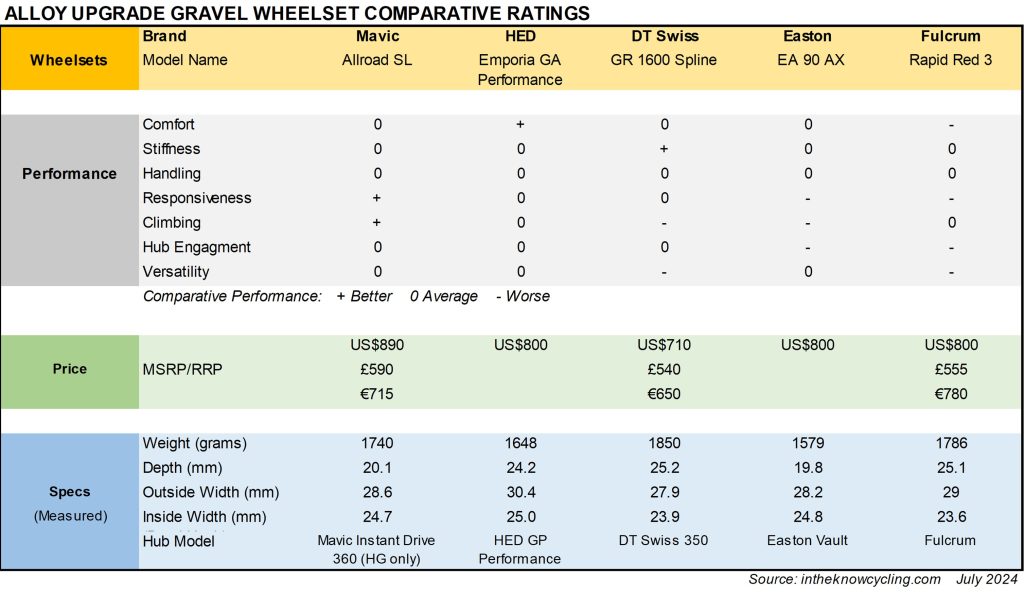
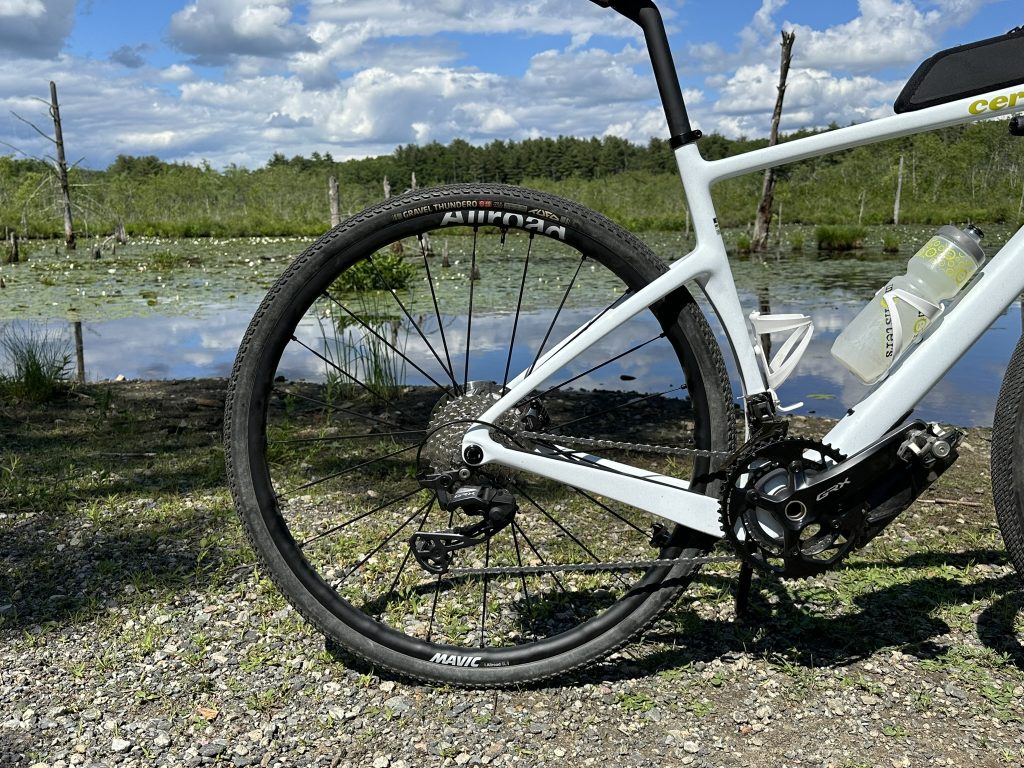

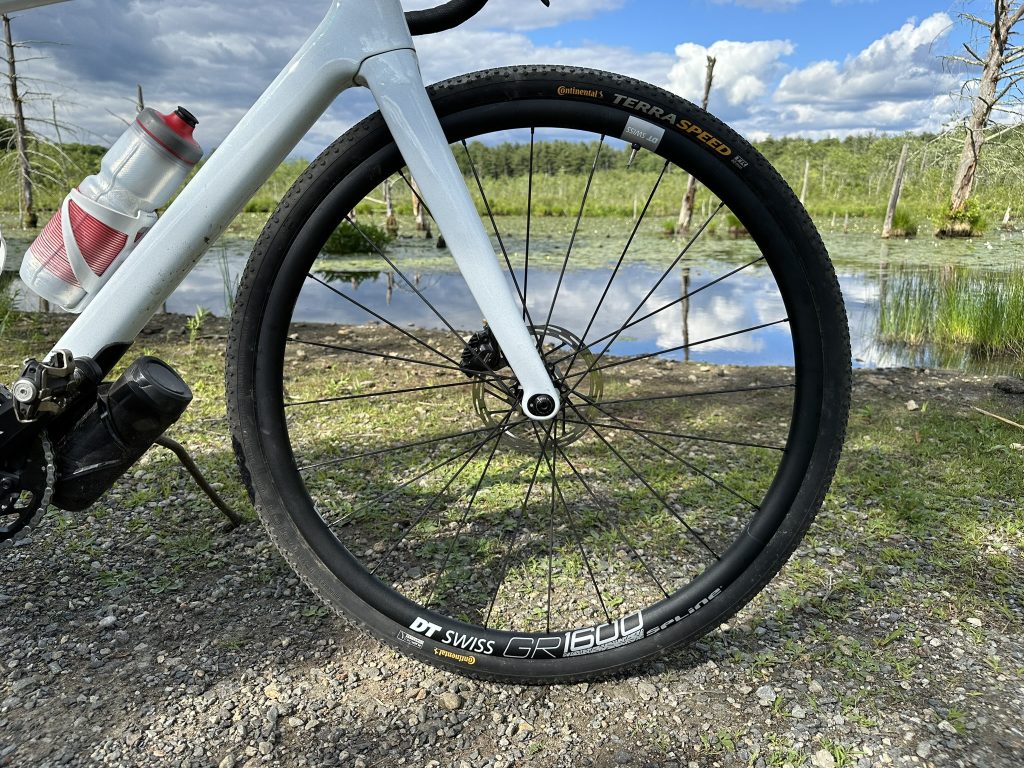
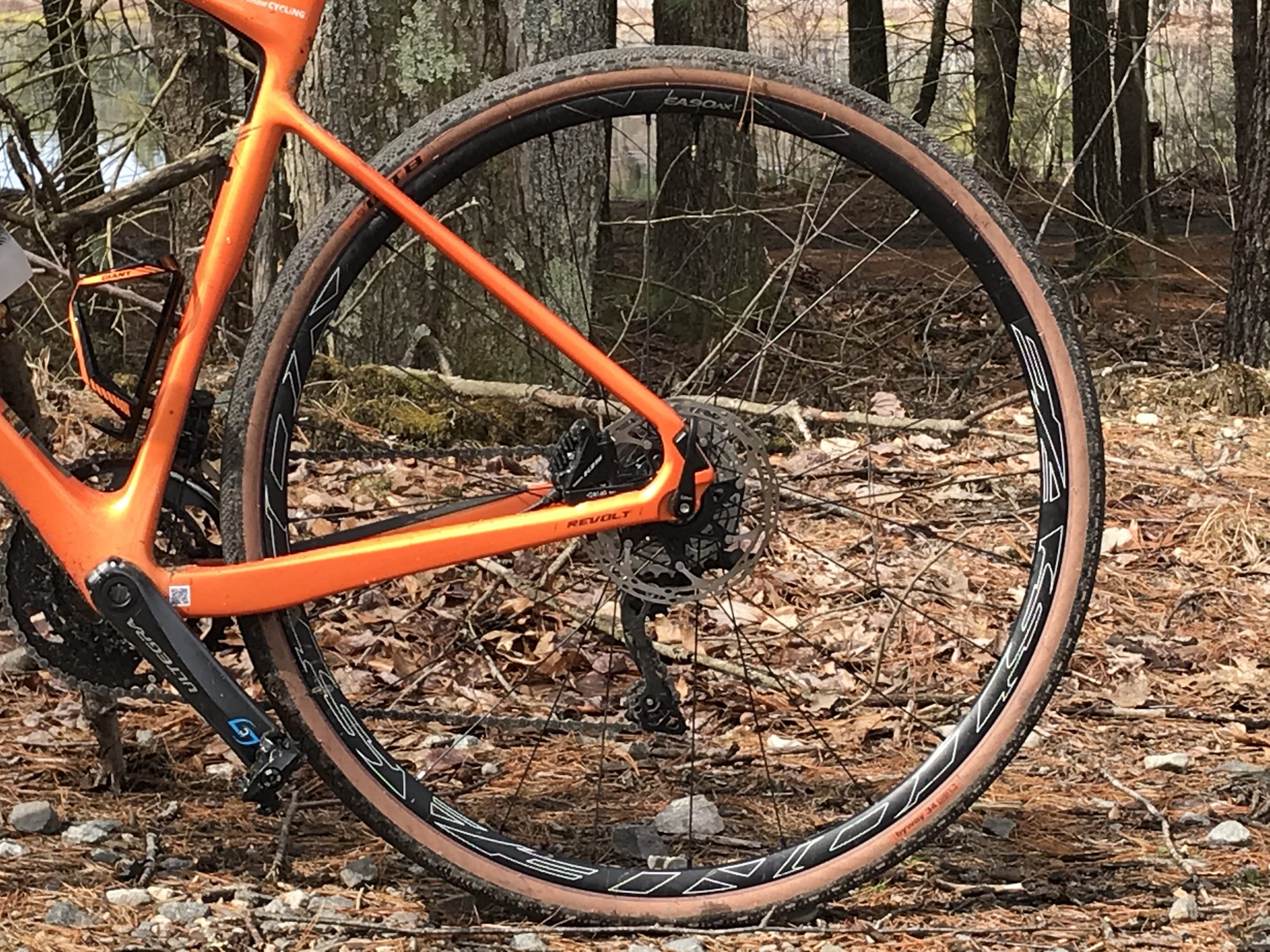

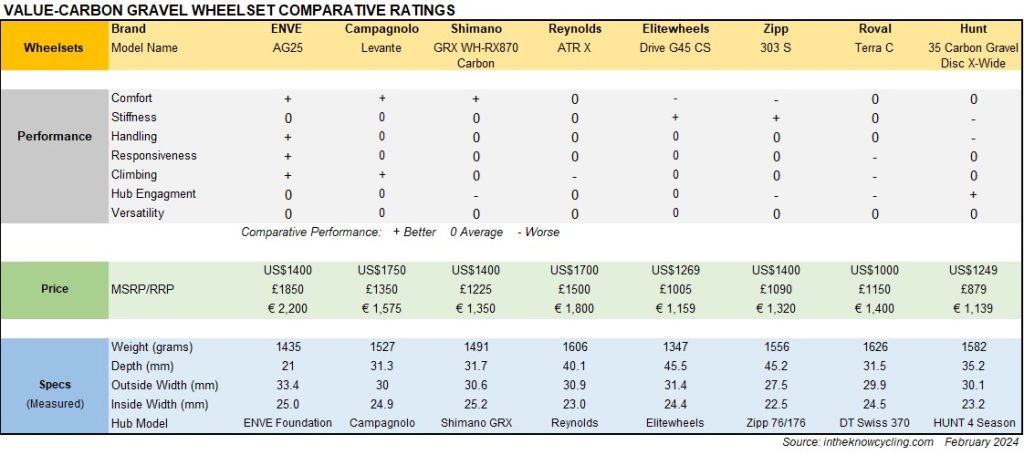
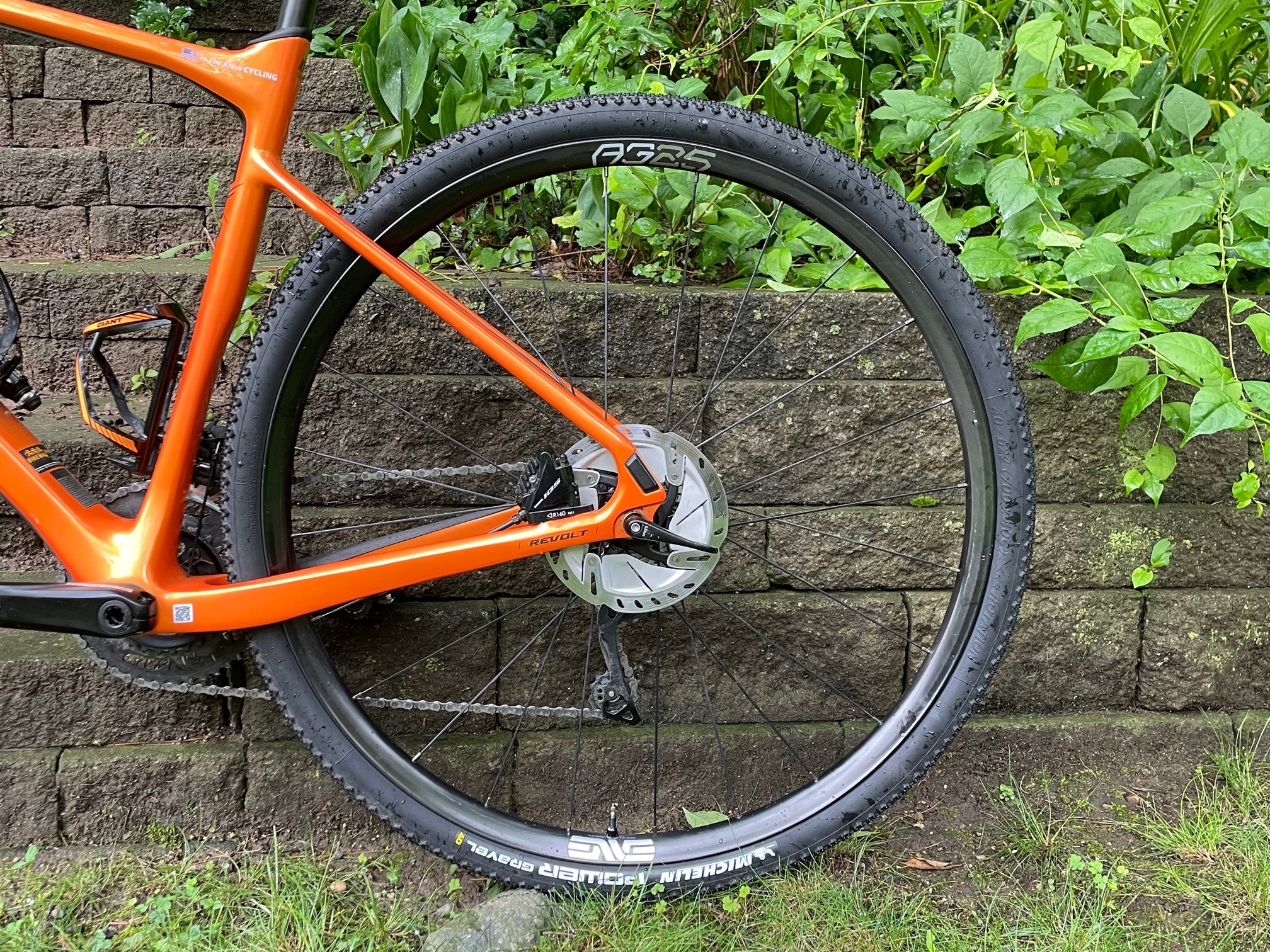

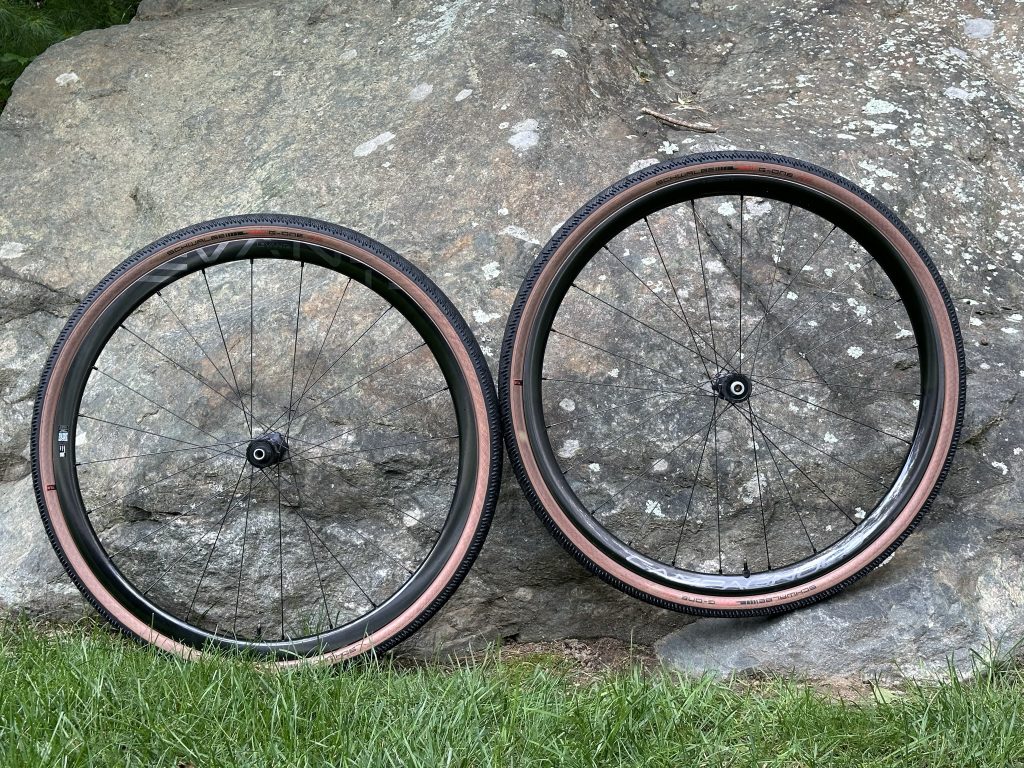
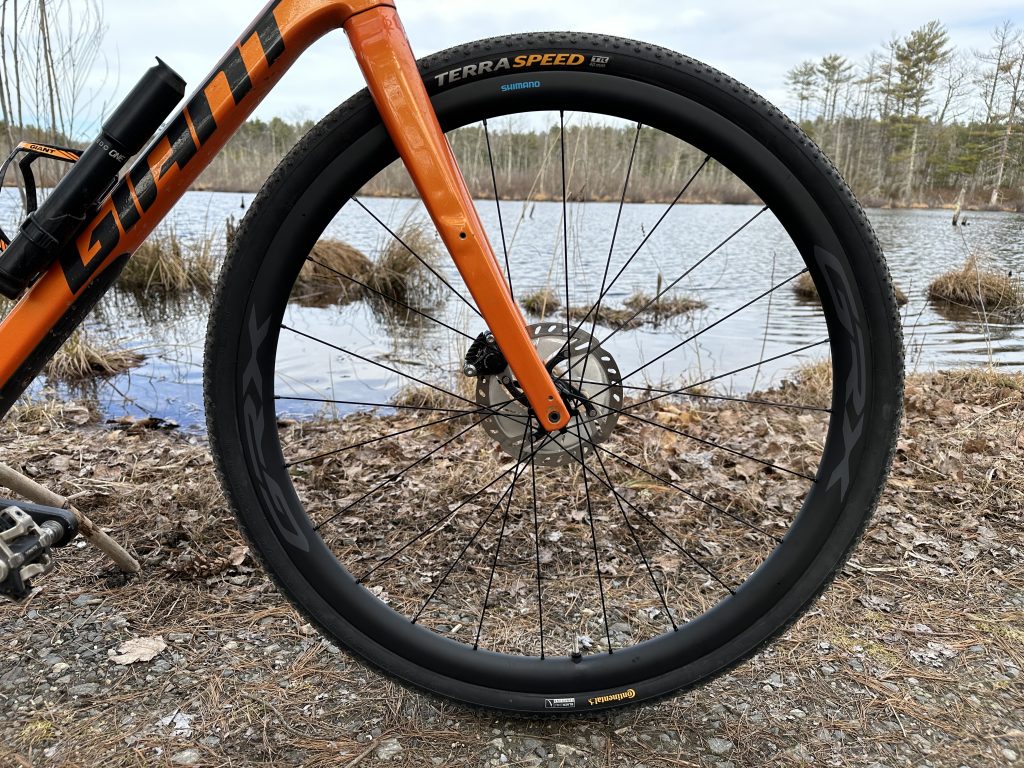
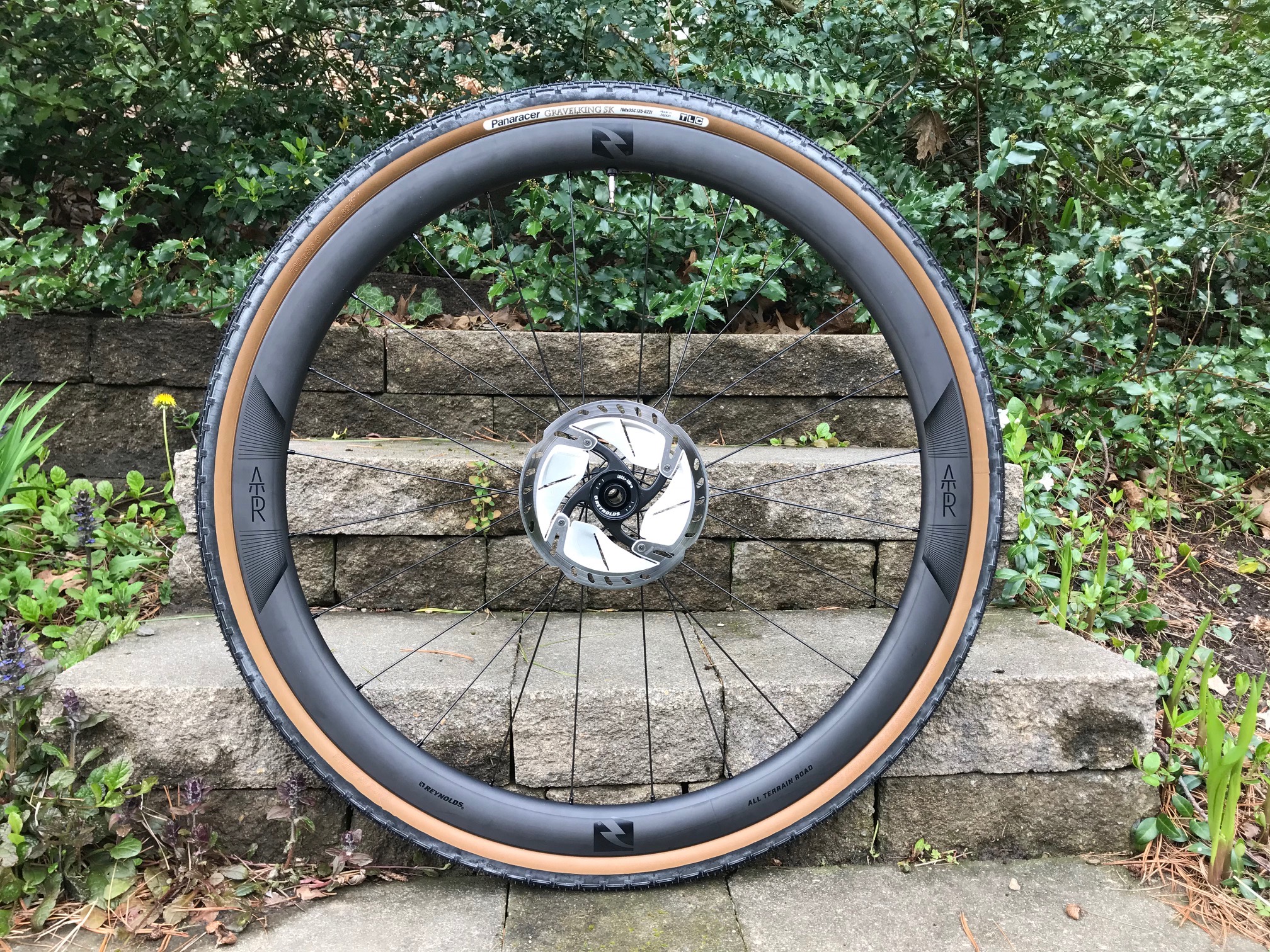


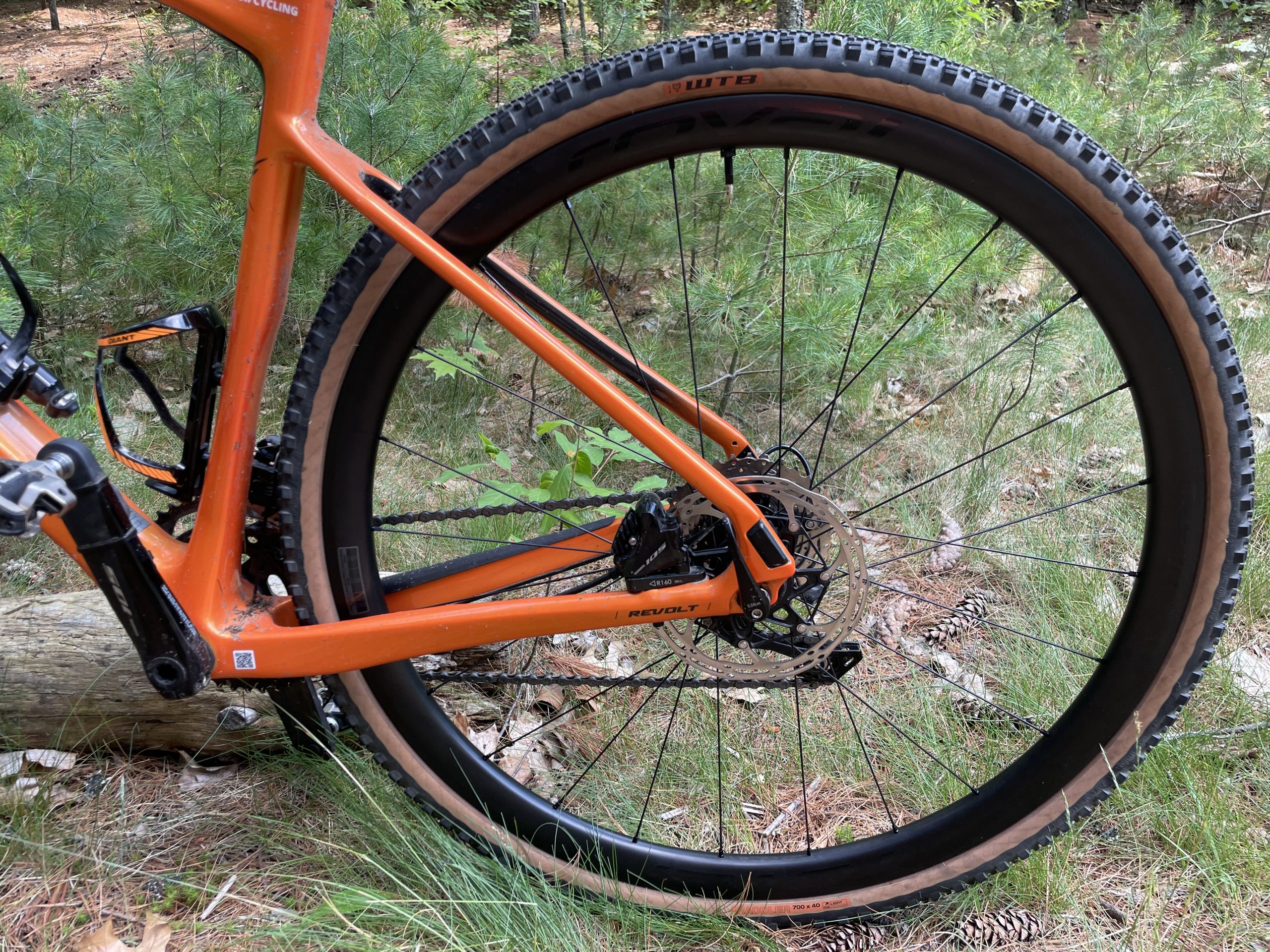
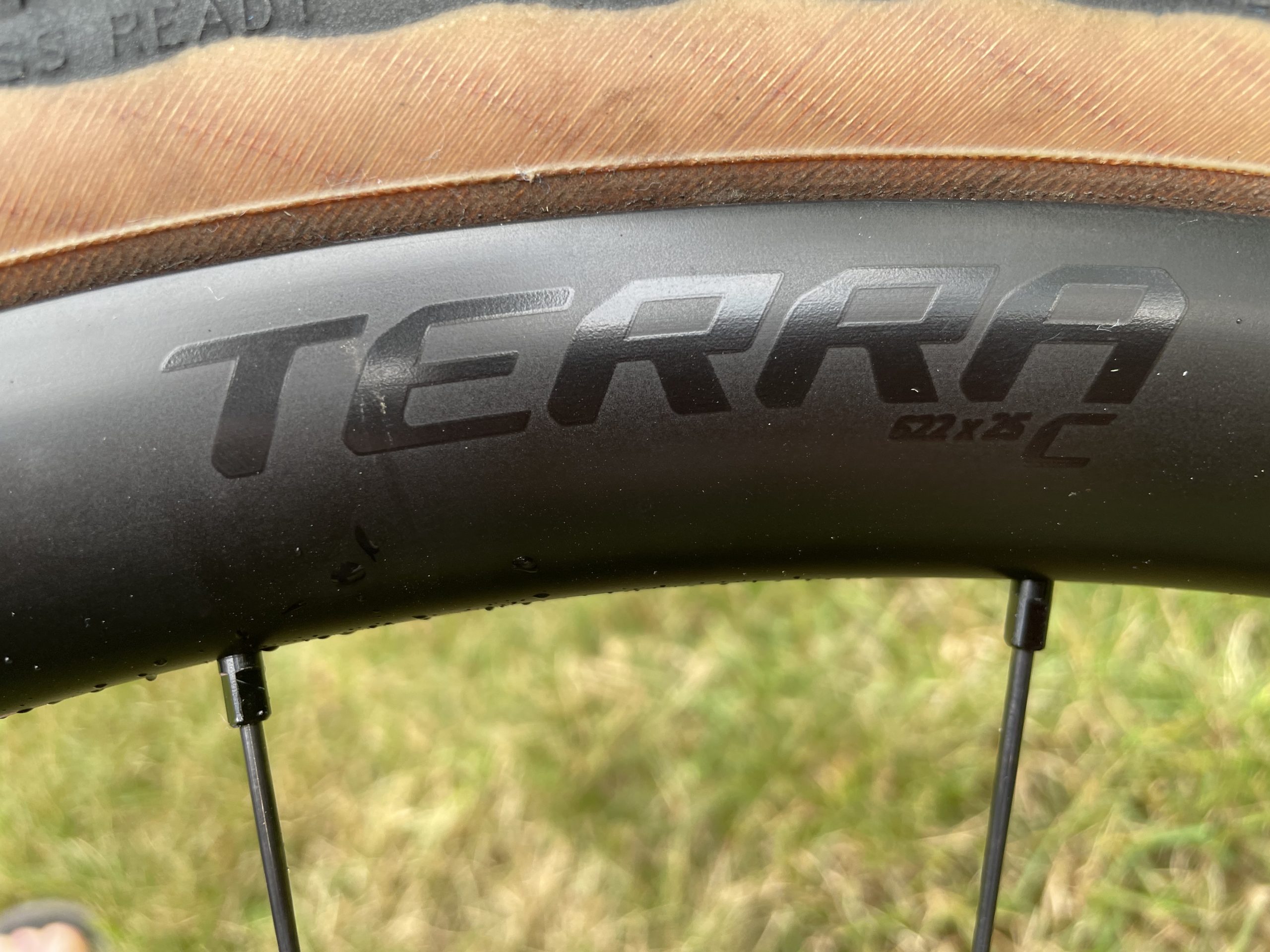
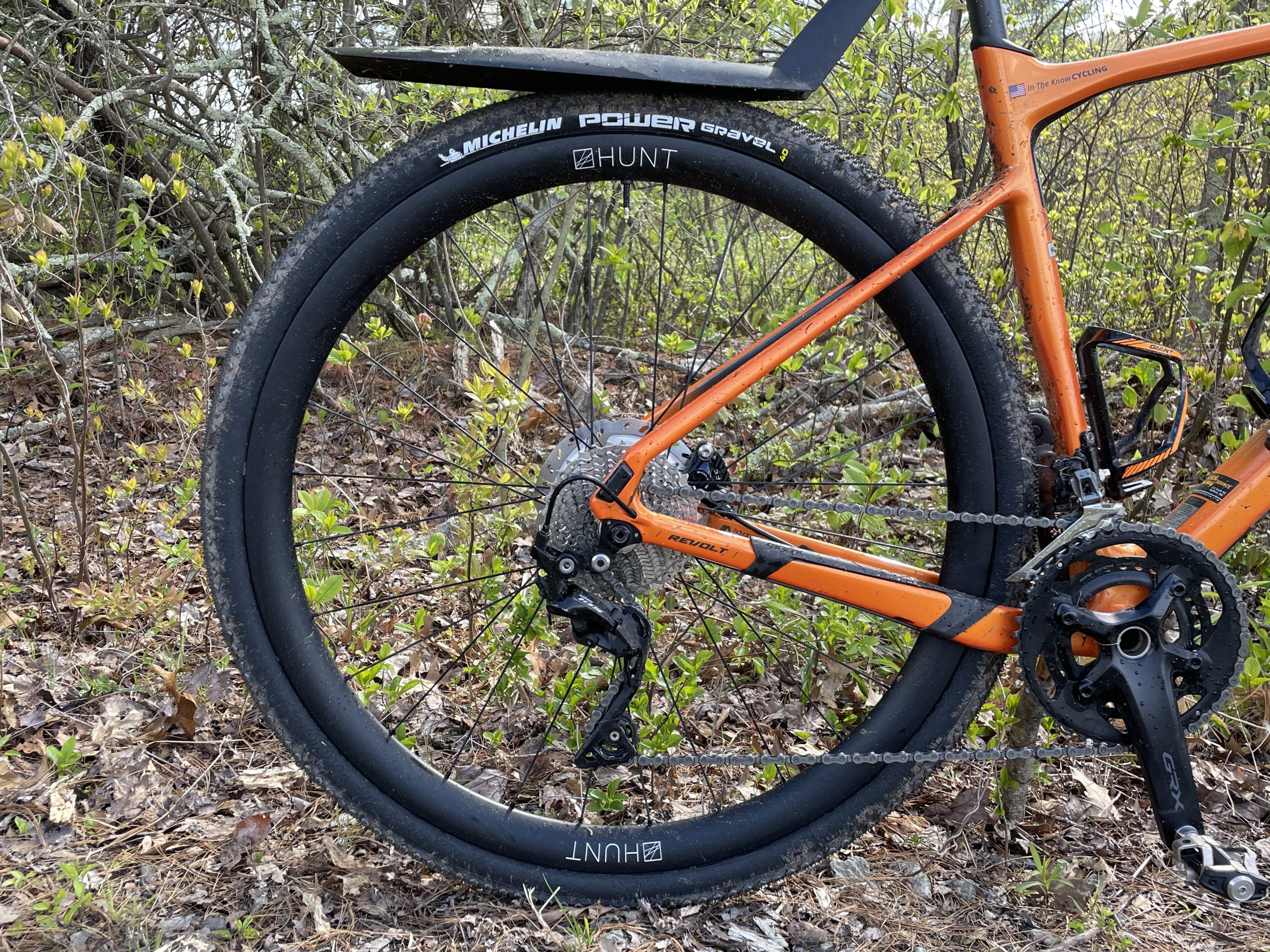

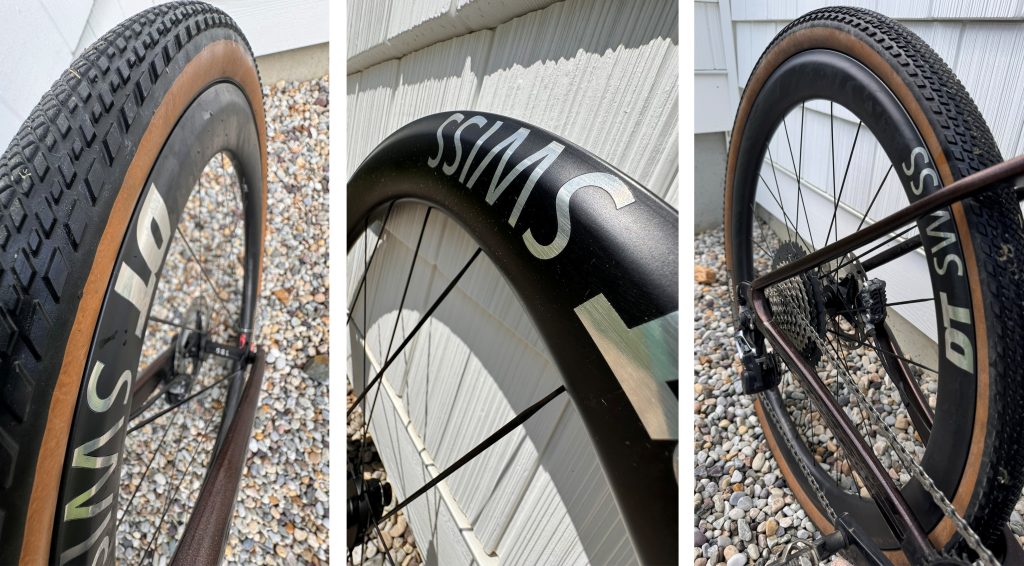
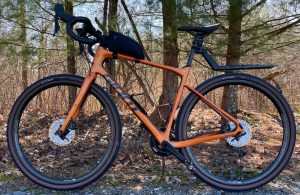
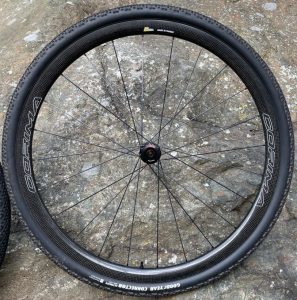
You really should look at the Hunt Wheels sets.
Tim, My first experience with Hunt wheels wasn’t real positive. https://intheknowcycling.com/the-best-carbon-wheelset-for-the-money-2/#Hunt.
As I wrote above, if you “have a deep interest in a set of gravel wheels I’ve not tested, let me know which ones and why.” Steve
What do you think about Vision Metreon wheelset?
Kurt, The Metron wheels are road wheelsets that I wouldn’t think would do well on gravel due to their width (19mm internal, 25mm or 26mm external depending on the model). They are also a bit pricey ($1700 and up) for the value-carbon segment and a good deal heavier (150g) vs. those in the performance carbon segment. Hard to know for sure unless I tried them but they wouldn’t naturally rise to the top of my gravel riding to-review list. Cheers, Steve
Great review as always. Torn between the Bontrager Aeolus and the Zipp 303S. Part of the dilemma is the ride to get to gravel is usually a long one, so you are half on road and half off, and would love a versatile set that can do both well. I can’t afford the ENVEs or the Firecrest, so those 3 look like a good bet. Am really intrigued by the Heds Eroica too. What to do Steve!!??
I recently purchased the Shimano GRX wheelset and wow! I was surprised! Love them. Have you tried them? Am I crazy?
Andrew, good to hear. Haven’t tried them. Heavier (claimed 1720 grams) and narrower (21.6 mm) than those I tested but less expensive ($400). Likely more of a stock wheelset competitor. Steve
Hi Steve,
Excellent review as always, thx.
Re: The NSW and ENVE rim and Tangente Speed Tubeless combinations easily passed the 105% rim to outside width ratio target for optimal aero performance while the narrower outside width of the Firecrest with the Tangente put it slightly under 100%, would it be possible to publish the WAM (of the various tires and performance Rims) in the combinations you tested?
Thx. again and regards
Dushko, You can see the NSW and ENVE ratios with different tires (and other pure road rims) here: https://intheknowcycling.com/best-tubeless-tires/. The ratios for the Firecrest rim with the tires mentioned above are: Zipp 98%, Specialized 100%, Bontrager and Schwalbe 102%. Steve
Thx. Steve,
Do you maybe plan to include in the testing circle Enve SES 27c / 29c tires? – reading excellent reviews for them
Cheers, Dushko
Dushko, We’re riding the SES 25c version now. Will review it within the next 30 days. Don’t have the wider versions as yet. Steve
I really enjoy reading your work a lot. I’m new to cycling in general, but really enjoy riding on gravel roads in the country, and away from busy streets. I only have 725kms on my Trek Checkpoint. I have nearly 500kms on the Bontrager GR1 tires that you reviewed in your excellent Gravel Tire Test. I will definitely get the Continental Terra Speed tires next, as you suggested in your article!
For the Gravel Wheelsets review, I wish you had a rating box system, for these wheels sets, as your did for the Gravel Tire reviews. It made it so much easier to compare.
Thanks again for your work. I look forward to your next gravel article! Awesome website!
Hey Steve, great site with lots of useful info. I have ordered a new gravel bike ($1700) and I’m already thinking about wheel upgrades. Improving climbing performance is a primary goal (I know – rule 5). I am limiting my budget on this, so I have looked around for upgrade alloy disk wheels. I am also considering replacing the rims and spokes and reusing the stock hubs. I have been building my own wheels for years, so this route is feasible for me. I have Boyd CCC wheels and Pacenti wheels under consideration. What do you know about Pacenti? I got a pair of their rims for a mountain bike a few years ago and had no issues.
Hi Ken, sounds like a fun project. I’m not a wheel builder and haven’t tested wheels built with Pacenti rims so can’t offer any useful perspective for you. Steve
Thanks for your helpful reviews of gravel wheels and tires. I bought a Giant Revolt Advanced 0 gravel bike this spring with Giant CXR-1 carbon wheels and Maxxis Velocita 700×40 tires. If you have ridden these items, how would you rate them against the gravel wheels and tires that you have reviewed?
Rob, My Giant Revolt Advanced 2 came with the same wheels. They are quite heavy, even for stock wheels, weighing nearly 2kg. They really don’t do the rest of the bike justice, holding you back from what you could do with that frame. I couldn’t get them off my bike soon enough. As to the tires, I’ve not ridden them but judging from the tread pattern and Maxxis’ own description, they seem limited to paved and hard pack Class 1 dirt roads. Steve
Steve, would be interested to hear your thoughts on the ENVE G23 wheelset and the new Giant CXR-2 wheelset. The CXR-2 came stock on my 2021 Revolt and I am impressed with them to date.
The CXR-2 has an ID of 25mm and is about 100g lighter than the CXR-1 it replaced.
Patrick, So we did test the G23 a while back (here) but didn’t compare them to others as it was a year or so before the current flood of gravel wheel options that prompted me to do this review. In retrospect, I’d suggest it’s best for more challenging Class 3 and 4 surfaces with a lot of climbing whereas the alloy and value-carbon in this review are probably best on Class 1 and 2 surfaces. The performance-carbon ones are versatile enough to do well on all gravel classes and paved roads too.
I’ve not ridden the CXR-2 but, as a stock wheel on the Revolt, it probably performs best on Class 1 and 2 gravel surfaces in line with the value-carbon wheels. DT Swiss makes Giant branded wheels and the latter have never stood out against wheels made or sold by companies who don’t also make bikes. Both my fellow tester Miles and I own Giant bikes, Miles an aero road bike and me a Revolt, so we are somewhat experienced in the Giant world and would love to not have had to replace their wheels on our bikes with better ones. Steve
Hi Steve
I want to know if you have “cosmetic” problem with Enve wheels
I call cosmetic because appear some white filament in the structure of rims
From Enve seams, normal , but is aestetic to see
please give me you opinion
I some review i read that Enve replace the wheelset for this “cosmetic”problem….
Luca, I’ve seen this to various degrees on all the ENVE wheels I’ve tested. I wrote about it and my experience dealing with ENVE about it about halfway into this review of the 3.4 disc wheelset here. In my experience, it is totally cosmetic but clearly disappointing especially when you spend as much as you do on their wheels. Yet, ENVE’s superior performance far outweighs the inferior cosmetic finish. I’ve ridden many similarly priced wheels that have a very beautiful finish but don’t perform anywhere near as well as the ENVEs. I’m more than willing to make that tradeoff, especially since I can’t see the wheel finish at the speeds I’m riding. Steve
HI Steve ! thx for comment !
do you try reserve 32 with dt 180 hubs ?
i m looking also this wheelset
thx !
Luca, Never heard of that wheelset. Steve
Hi Steve
brand from Santa cruz ( reserve)
https://www.reservewheels.com/reserve-32-gravel-wheel
thx for your fast answer
Luca, right, I looked them up when you first asked about them but had never heard of them before. To be clear, it isn’t a brand from Santa Cruz but was started “by engineers” who left that company. They started selling their first gravel wheelset last year. They are like a lot of new businesses looking to get a foothold in the gravel world. Nothing about their design, components, process, or price stands out for me; actually, some of those things – price, weight, rim width, and depth – along with their short time in the business dissuades me as an enthusiast consumer who also reviews gear from looking into them further. Again, there are a lot of small operators who jump into the market and do a great job of marketing themselves but whose product and experience take a bit more time to develop to the point where I’d want to test out their gear or suggest readers taking a chance on them. I appreciate you raising this one with me and am using you/them as an example of what to consider before being taken in by the marketing. They may make high performing or great value wheels or become a great option over time so I’ll keep them on my radar. For now, I’ll pass. Steve
Hello! Thanks for this excellent review! It is very helpful.
I would appreciate your expert opinion on a question. I have a 2020 Trek Domane with an Aeolus Pro 3v wheelset with Bontrager R3 32mm tires, I use this bike and tires mainly for asphalt roads because I have a back injury and this is very comfortable for me. But I still like going fast, climbing a lot and long routes.
I am very happy and surprised with the Domane. The only downsides I have felt is the weight. I am considering swapping the wheelset for a Firecrest Zipp 303 (I can’t afford a pair of Enve wheels) for performance and weight reasons (-300gr). Do you think the change is worth it? What do you think these new wheels could give me? Do you think I will notice a big difference?
(I also have a gravel bike, which I hope to use again in the future if my back is better, and I could use the same wheels as the Domane.)
Thanks again for your articles!.
Cheers, Juancar.
Juancar, Yes, the new Firecrest Zipp 303 disc I’ve reviewed here is a superior wheelset to the Bontrager Aeolus Pro 3V and you’ll notice the weight difference for sure on climbs. Steve
Thanks Steve!
The fact is that I use tires of at least 30 mm (currently 32 mm). The external width is 32mm for the Bontrager wheels and 30mm for the Zipp.
You have found that even “only” with 28mm tires it does not comply with the 105 rule.
I know it’s a small imposition, but, do you think it would a bad idea to use them with 30mm tires?
(in terms of rolling resistance, my feeling with Bontrager is very good: 32mm external width on 32mm tires)
Thanks a lot in advance!
Cheers, Juancar.
Juancar, Neither of these wheels are deep enough to give you great aero gains even with narrower tires. Given your priority for comfort and low weight and the rolling resistance benefit you get with the wider tires, I’d think you’d be good with the Firecrest and 30mm R3s. Steve
Understood. Thanks for your help! And for your excellent posts!. Juancar
Hi Steve! Great Content, Thanks!
I am curious whether you would consider the DTSwiss GR1600 a comparable competitor to the HED Emporia GA?
Tate, Hard to say from a performance standpoint as I haven’t ridden the GR1600. Looking at the specs, the GR1600 looks a good deal heavier, a bit narrower, and with a less responsive hub than the one on the Emporia GA Pro and perhaps the Performance as well. Steve
Agreel on paper, the GR1600 seems to be more of a bike-packing type wheel. Are there any wheels you would have liked to review but didn’t get the chance? Spec-wise the HED’s are hard to beat at their price point, which is what I’m currently telling myself I can afford. The Boyd CCC is also pretty attractive, but I’m not sure if they are a big “mainstream” wheel maker. I’d rather not risk small/boutique wheel builder wheels.
Tate, In the alloy upgrade category, there are others I’d be curious to try but that will have to wait until next year when there will likely be more still. Boyd has been around for a while and is smaller and has limited distribution/customer support at the LBS level but designs their own wheels (rather than buys them from an overseas catalog, brands them, and sells and services them directly) and is not what I would consider risky. The big “mainstream” wheelmakers that have gravel alloy wheels beyond those I’ve tested – Campy, Fulcrum, Mavic, Shimano, DT Swiss – don’t make anything currently that screams “review me” about them. Steve
Going into my first carbon wheelset, I thought I wanted the 303s, but these 303 Firecrests sure sound like the perfect wheelset for my style of riding – not Aero speeds, but lots of climbing and some gravel. Am I reading that correctly?
Thanks for the overview, appreciate your work.
Jake, Yes. Climbing and gravel are its strengths. Steve
Have any thoughts on the newer HED Emporia GC3 Carbon Disc?
Jason, haven’t tested it yet but rode and liked the HED Eroica Carbon wheelset that the GC3 replaces. Planning to test it in the spring. Steve
Hi Steve- I have DT Swiss GR1800’s on Canyon Grail. Perfectly ok wheels that are strong and roll well but I can feel the 1895g weight on climbs. The issue is they’re not really stock wheels but are arguably not upgrade wheels either. I can’t afford carbon so what you reccommend as an upgrade gravel wheel that is actually superior to my current wheelset? Thanks
Charles, While I haven’t tested your wheelset, based on the weight alone, I’m confident that all of the alloy upgrade gravel wheels I’ve tested would be better performers. The Bontrager Paradigm Elite 25 has the best acceleration of those and will get you uphill far better than your DT Swiss wheels. Steve
Hi, I am really curious to hear/read reviews of the Spinergy GXX carbon wheels.
Looks like they’d fit in the value carbon range but the PBO spokes are intriguing for comfort/performance and I’m curious about that and their hub performance.
Thanks
Jason, Thanks. I’ll check them out. Steve
Thanks man!
Side note, I’m riding a 2020 Warbird Apex 1 and my rotors are 6 bolt mount. wondering if I should get center lock rotors to match the GXX hubs or use adapters.
Either works. More important is what size rotors you want to use. A lot of 6 bolt came out of the MTB world where 160mm is standard. Centerlock comes from the road bike world where 140mm is standard unless you are a heavy rider. Gravel can go either way. And of course, if your Warbird is set up for 160mm rotors and you go 140mm you will need to adjust the caliper position which may just be just repositioning them or require adapters.
Great write-up Steve. I’m curious if you have any thoughts on the Corima G30.5 wheel set? This would be for something like the Enve 3.4 AR…one wheel to span paved riding and light to moderate gravel. Looking to finalize a wheel set choice for an Open U.P. build for riding throughout New England. Thanks!
Asif, I haven’t ridden the Corima G30.5 wheels so don’t have a view about their performance. The specs don’t look attractive. The rims are narrower internally (3mm) and externally (4mm) and shallower (10mm) than the 3.4 AR by a good margin. They are also a heavier (125g) wheelset, again by a good deal. These are all differences that I would typically notice in the performance between two wheelsets. These specs are more in line with the value-carbon Zipp 303 S and ATR X yet at a performance-carbon price. The hubset (DT 240 EXP) used on the Corima is first-rate and I have no way to judge the layup or how the rims, hubs, spokes perform as an integrated package without riding it. Based on the specs and price alone and with no experience riding Corima brand wheels, it wouldn’t be one that I would put at the top of my list to check out. Steve
Hello. I have been looking for my gravel wheels for some time. I ride, more or less, 50% on the road and 50% in varied terrain in the forests, where there are many roots and obstacles of this kind. Could you recommend me wheels that can handle this kind of terrain and simply will not break? Until now I have never had contact with carbon wheels hence my fears. Greetings .
Tomek, If you buy carbon wheels from established brands that provide 2-year or longer warranties, you will find that they don’t break. Steve
Hi Steve,
I’m wondering if you have an opinion about the Roval Terra CLX 700c? I’m looking for a set of wheels to put on my OPEN U.P. which will be used for a mixture of off-road/gravel and road riding. Thanks!
Ben, Haven’t tested them. Hope to in 2021. They look similar in design and price to the Enve and Zipp performance-carbon gravel wheels. Steve
Steve, I’ll keep an eye out for your review. Reason I’m interested in hearing about these is that I’m in the UK and the Roval wheels are significantly cheaper than the Enve G23 (£1850 vs £2800) and a bit lighter than the Zipp 303 Firecrest for a very similar price, so on paper at least, they seem like a good option.
Hi Steve. Excellent info all across your site. Thanks for your dedication. Here is a quagmire of a question I can’t seem to find an answer to anywhere. I have an older Surly Cross Check I’m getting setup for gravel riding. I will be running the WTB 700x40c Raddler tires. Are you aware of any rim that is: rim brake compatible, tubeless ready, wide internal width (min 22mm but preferably 25+), alloy, and reasonably lightweight (say 550g or less)?
The only rim I have tracked down that is close is the Velocity Cliffhanger, but it’s a beast at 675g. I’m only 160 lbs and don’t plan on ever carrying more than 20# of gear on this rig. My priorities lie in comfort and trouble free performance, but I might be doing some racing or spirited group rides, hence the desire to keep weight somewhat in check. Cheers!
Greg, I’ve only looked at disc brake wheels for gravel riding. I don’t think rim brake wheels are a good application for gravel riding. Steve
Any plans to review Enve Foundation 45? Interesting price point and with the Enve warranty. Would love to see Enve do an “AR” variant of this wheel at 25mm internal width.
Asif, I will review the ENVE 45 Foundation this spring. While you could ride it on gravel, it’s internal width suggests to me that it’s probably not a great gravel wheelset and likely best for road. As you likely know, ENVE makes the 4.5AR with a 25mm internal width along with the 3.4AR that are excellent on both road and gravel. They are more expensive than the Foundation wheels but it’s a case getting what you pay for. Steve
An awesome comparative writeup. I often find gravel wheel reviews ignore on road performance so seeing these reviews focus on wheels that can truly do double duty is great.
Have you looked into any of lightbicycle co’s offerings?
[Moderator’s note: Remainder of this comment deleted as it read like a product advertisement or promotion.]
Take care,
Andrew
Andrew, While I’ve not tested one of their gravel wheelsets, I ordered, rode, and reviewed Light Bicycle’s WR46C02, a carbon rim road wheelset speced out with their 21mm internal, 28mm external width, 46mm deep carbon rims, and CX-ray spokes with DT Swiss 240 hubs. It weighed 1504 grams and cost USD$1267 at the time. You can find the review here.
In short, it offered decent but not great performance, not on par with $2000 wheelsets and with not the equivalent of some of the individual performance strengths (e.g. aero, stiffness, acceleration) of other wheelsets the are in its same price range.
More troublesome is the warranty, good only for the rims rather than the entire wheelset or any assembly defects. If you have a warranty issue beyond 30 days of your purchase, you are also required to pay for shipping to return the rims to their North American warehouse or their China facility, whichever location you bought it from, pay the shipping for the replacement rims, and then to get it rebuilt. Basically, this isn’t much of a warranty at all, and while I didn’t have any issues with the wheels I tested, if you do beyond 30 days, it could cost you a good deal of money and time to get back on the road or gravel with wheels that have unremarkable performance. Steve
Thanks for the reply steve!
I checked out your link and some of your other carbon wheel roundups- it’s crazy how much the material/ layup ends up affecting the ride quality in rims with such similar dimensions. I guess that’s what you end up paying the big bucks for. Coming from only having ridden alloy wheels this part is tricky for me to grasp.
I work for a trek dealer in australia and have the option to get a pretty solid discount on some pro 3vs. The only issue for me is weight really, I’d only be dropping about 100g with the upgrade. As a 61kg rider that does a lot of gravel climbs it’s hard to make that jump.
In comparison I can get a sub 1.4kg wheelset with the same dimensions, plus cxrays and brass nipples from Lightbicycle for about half the price. I can attest to bontrager’s warranty being next level and LB being subpar but I’ve never had wheel issues before.
With your experience on wheels from both makers do you think it’d still be worth pulling the trigger on 3vs? Would hate to get lumped with a rim which is too flexible or rides real harsh.
Take care,
Andrew
Andrew, Keith Bontrager famously said “strong, light, cheap; pick two.” I recommend riders buy wheels that provide the performance, price, and quality that aligns with their goals, riding profile, and budget (rather than comparing specs or design and disregarding quality and service). That’s often hard to do.
I haven’t tested a gravel wheelset that will give you the performance your want for your climbing profile at a price that fits with your budget goal. If that budget is fixed, you have to make a trade-off among the other focus areas, e.g. less performance or a different riding profile. The Pro 3vs are excellent performers on gravel flats and rollers but not on road ones and are just average on climbs on either surface. The service on the Light Bicycles is enough to put me off no matter the performance (which I don’t know about) or the price. Steve
Yeah I hear you, it’s all about compromise in one area or another. The Aeolus RSL37v is another option on the horizon that might offer the right combo of performance and service to make me jump at a higher priced option. I think I’ll hold on until they’re released in AU and go from there.
Again thanks so much for your input and time steve.
Hi Steve,
Very interesting review, thank you.
I was wondering what is your opinion of using a carbon xc wheels with gravel bike.
For example Mavic crossmax pro carbon (2017) with 23 mm internal rim width and weight around 1,500g or dt swiss 1501. Theoretically speaking they have the specs you were looking for in gravel wheel and could be much cheaper.
Thanks,
Erez
Erez, need to make sure the wheels will fit on your gravel bike. For example, these two have rear hub width options that won’t fit most gravel bikes and the Mavic uses an older thru axle diameter and 6-bolt rotor connection. These aren’t less expensive wheels either. I’d stick with gravel wheels to make your life simpler. DT Swiss, Mavic and others are making wheels specifically for gravel bikes now as this segment is growing pretty quickly now. Steve
Found your review and just wanted to say thank you. You are incredibly thorough and I’m so thankful that you took the time to test these wheelsets so that I wouldn’t have to! Thanks again and your reviews are exceptional!